
Emergence
by
Steven Johnson
You can date it back to the day in the early nineties when Will Wright released a program called SimCity, which would go on to become one of the best-selling video-game franchises of all time. SimCity would also inaugurate a new phase in the developing story of self-organizing: emergent behavior was no longer purely an object of study, something to interpret and model in the lab. It was also something you could build, something you could interact with, and something you could sell. While SimCity came out of the developing web of the bottom-up worldview, it suggested a whole new opening: SimCity was a work of culture, not science. It aimed to entertain, not explain.
…
But a quick look at the software best-seller lists will tell you that city simulations are more than just an educational device. Will Wright’s SimCity franchise has now sold millions of copies; it’s likely that the number of virtual towns created using Wright’s tools exceeds the number of real towns formed in modern human history. Some games attract our attention by appealing to our appetite for storytelling, following a linear progression of move and countermove, with clearly defined beginnings and endings; other games catch the eye by blowing things up. Sim-City was one of the first games to exploit the uncanny, bottom-up powers of emergence. Wright’s genius was not simply in recognizing the fun of simulating an entire metropolis on your screen.
…
Wright’s genius was not simply in recognizing the fun of simulating an entire metropolis on your screen. He also hit upon a brilliant programming trick that enabled the city to evolve in a more lifelike way—a trick that closely resembles the behavior of ant colonies and embryos. Much has been made of the fact that you can’t ever “win” at SimCity, but it’s probably more important to note that you don’t really “play” SimCity either, at least the way we talk about playing conventional games. Users grow their virtual cities, but the cities evolve in unpredictable ways, and control over the city’s eventual shape is always indirect. You can create commercial zones or build a highway, but there’s never a guarantee that the neighborhood will take off or the crime rate go down.

All Your Base Are Belong to Us: How Fifty Years of Video Games Conquered Pop Culture
by
Harold Goldberg
Published 5 Apr 2011
While Wright had amassed some money from Bungeling Bay royalties, the four years it took to find a publisher took their toll; every company he and Braun met with agreed with Broderbund. Yet, in 1989, it was actually Broderbund that agreed to copublish SimCity with Maxis. Broderbund had just launched an experimental affiliate program that allowed Wright and Braun to keep 80 percent of the profits, instead of just 15 percent of the royalties, and was eager for guinea pigs. Every game would be given on consignment to Broderbund, which would distribute SimCity. Maxis would do the rest of the work, including boxing the game and manufacturing the disks. Initially, Wright and Maxis sold the game themselves at Bay Area computer fairs at which they also passed out flyers.
…
The publication of the full-page article was one of the first instances in which a videogame was reviewed by a major newsweekly (the first two were reviews of the interactive text adventures Zork and A Mind Forever Wandering in 1985). The SimCity review was a sign that games were slowly going mainstream and legit. Suddenly, Wright was the “it” designer, and SimCity became the Game of the Year. It had earned approximately $3 million by the time Christmas rolled around. As the PC version sold 500,000 copies and the Nintendo version added sales of 1.3 million more, the phone rang off the hook with requests for Wright to work on simulations.
…
But EA recognized Wright’s brilliance and hired some of the country’s brightest designers to help him out. In 1999, they released SimCity 3000, starring the shoot-from-the-hip former mayor of New York City Ed Koch. By that time, Trip Hawkins was no longer involved in the company, but his edict to corral superstars for EA games had not been forgotten by what was becoming the world’s biggest videogame software maker. At the time, the crotchety Koch was a bigmouthed star with a series of bestselling books and was featured semiregularly on NBC’s Saturday Night Live. He was the perfect celebrity for SimCity 3000. In part, it was SimAnt that gave Wright the idea for his next series of games.
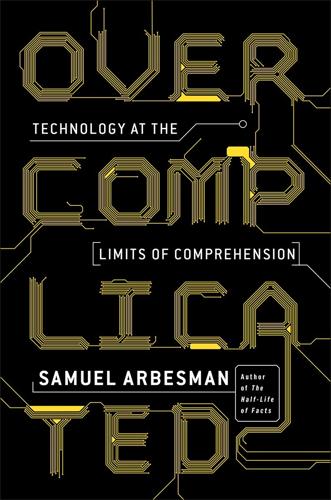
Overcomplicated: Technology at the Limits of Comprehension
by
Samuel Arbesman
Published 18 Jul 2016
component of the telephone system: Eytan Adar et al., “Benevolent Deception in Human Computer Interaction,” CHI ’13: Proceedings of the SIGCHI Conference on Human Factors in Computing Systems, Paris, France, April 27–May 2, 2013 (New York: ACM Digital Library, 2013): 1863–72. the computer game SimCity: For more on SimCity and how it can shed some light on how a complicated system works, read Doug Bierend, “SimCity That I Used to Know: On the Game’s 25th Birthday, a Devotee Talks with Creator Will Wright,” re:form, October 17, 2014, https://medium.com/re-form/simcity-that-i-used-to-know-d5d8c49e3e1d. Near the end of Average Is Over: Cowen, Average Is Over, 227–28. Cowen is speculating specifically about the future of economics and other social sciences, but we could need such “interpreters” for our future understanding of anthropic systems as well.
…
Playing with a simulation of the system we’re interested in—testing its limits and fiddling with its parameters, without understanding it completely—can be a powerful path to insight, and is a skill that needs cultivation. For example, the computer game SimCity, a model of sorts, gives its users insights into how a city works. Before SimCity, I doubt many outside the realm of urban planning and civil engineering had a clear mental model of how cities worked, and we weren’t able to twiddle the knobs of urban life to produce counterfactual outcomes. We probably still can’t do that at the level of complexity of an actual city, but those who play these types of games do have a better understanding of the general effects of their actions.
…
At one point, Norman noticed that the computer program had reached the stage where it was “reticulating splines.” This phrase sounded complicated, and that was reassuring to Norman—this program must really know what it was doing. But he didn’t. He got curious, and after some research he discovered—as any good fan of SimCity 2000 would know—that this was actually an inside joke, a nonsensical phrase inserted into the game that only sounds like it means something. Ever since, it has cropped up in various games and other software. Think back to the last time you installed a new piece of software. Did you know what was going on?

Everything Bad Is Good for You: How Popular Culture Is Making Us Smarter
by
Steven Johnson
Published 5 Apr 2006
Why do we use the word "play" to describe this torture ? I ' m al ways amazed to see what our brains are willing to tolerate to reach the next level in these games. Several years ago I found myself on a family vacation with my seven-year-old nephew, and on one rainy day I decided to introduce him to the wonders of SimCity 2000, the legendary city simulator that allows you to play Robert Moses to a growing virtual metropolis. For most of our session, I was controlling the game, pointing out landmarks as I scrolled around my lit tle town. I suspect I was a somewhat condescending guide- treating the virtual world as more of a model train layout than a complex system.
…
He said it as naturally, and as confi dently, as he might have said, " I think we need to shoot the bad guy. " The i nteresti ng question here for m e is not whether games are, on the whole, more complex than most other cul tural experiences targeted at kids today-I think the answer to that is an emphatic yes. The question is why kids are so eager to soak up that much information when it is delivered to them in game form. My nephew would be asleep in five seconds if you popped him down in an urban studies class room, but somehow an hour of playing SimCity taught him that h igh tax rates in industrial areas can stifle development. That's a powerful learning experience, for reasons we 'll ex plore in the coming pages. But let's start with the more ele mental question o f desire. Why does a seven-year-old soak up the i ntricacies of industrial economics in game form, when the same subject would send him screaming for the exits in a cl a ssroom ?
…
But the game has a subtle reward archi tecture that plays a m a j o r role in the game's addictiveness : the software withholds a trove of ob jects and activities until you 've reached certain predefined levels , either of population, money, or popularity. You can build pretty much any kind of environment you want play ing SimCity, but you can't build a baseball stadium until you have fifty thousand residents. Similarly, Grand Theft Auto allows players to drive aimlessly through a vast urban environment, creating their own narratives as they explore the space. But for all that open-endedness, the game still forces you to complete a series of pre-defined missions be fore you are allowed to enter new areas of the city.
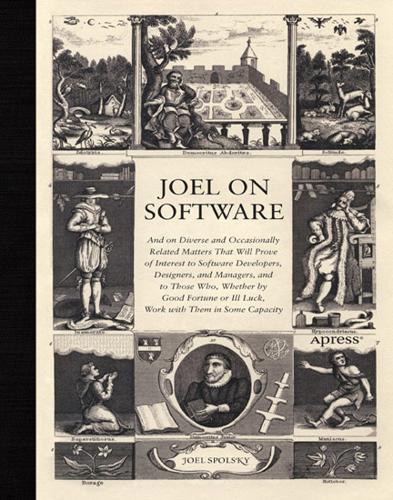
Joel on Software
by
Joel Spolsky
Published 1 Aug 2004
Microsoft obsessed about this, spending a big chunk of change testing every old program they could find with Win-dows 95. Jon Ross, who wrote the original version of SimCity for Windows 3.x, told me that he accidentally left a bug in SimCity where he read memory that he had just freed. Yep. It worked fine on Win-dows 3.x, because the memory never went anywhere. Here's the amazing part: On beta versions of Windows 95, SimCity wasn't working in testing. Microsoft tracked down the bug and added specific code to Windows 95 that looks for SimCity. If it finds SimCity running, it runs the memory allocator in a special mode that doesn't free memory right away. That's the kind of obsession with backward compatibility that made people willing to upgrade to Windows 95.
…
I first heard about this from one of the developers of the hit game SimCity, who told me that there was a critical bug in his application: it used memory right after freeing it, a major no-no that happened to work OK on DOS but would not work under Windows, where memory that is freed is likely to be snatched up by another running application right away. The testers on the Windows team were going through various popular applications, testing them to make sure they worked OK, but SimCity kept crashing. They reported this to the Windows developers, who disassembled SimCity, stepped through it in a debugger, found the bug, and added special code that checked if SimCity was running, and if it did, ran the memory allocator in a special mode in which you could still use memory after freeing it. __________ 5.
…
They reported this to the Windows developers, who disassembled SimCity, stepped through it in a debugger, found the bug, and added special code that checked if SimCity was running, and if it did, ran the memory allocator in a special mode in which you could still use memory after freeing it. __________ 5. Raymond Chen, The Old New Thing. See weblogs.asp.net/oldnewthing/. This was not an unusual case. The Windows testing team is huge and one of their most important responsibilities is guaranteeing that everyone can safely upgrade their operating system, no matter what applications they have installed, and those applications will continue to run, even if those applications do bad things or use undocumented functions or rely on buggy behavior that happens to be buggy in Windows n but is no longer buggy in Windows n+1.
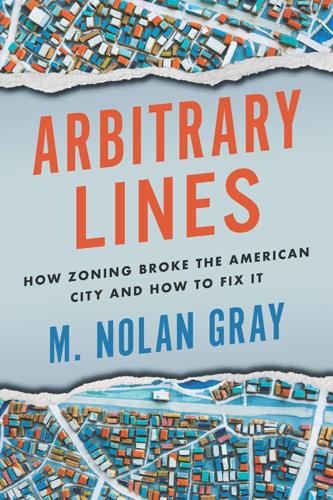
Arbitrary Lines: How Zoning Broke the American City and How to Fix It
by
M. Nolan Gray
Published 20 Jun 2022
In this regard, negative though it may at first seem, the project of this book is fundamentally constructive: beyond merely arguing against the arbitrary lines that hold us back, this book is a reminder that a more affordable, prosperous, equitable, and sustainable America is possible. Will you be a part of that journey? Part I CHAPTER 1 Where Zoning Comes From For many Americans, their singular experience with city planning is a little game called SimCity. First released in 1989 and developed by legendary game designer Will Wright, the game invites players to plan their own cities. More of a sandbox than a conventional game with points or levels, each new “round” of SimCity presents players with a virgin field, the power to map out streets and zoning, and the freedom to do whatever they like from there. Poor planning decisions are punished with blinking indicators and unsolicited advice from AI advisors; wise planning decisions are rewarded with happy simulated citizens and a growing city.
…
Pursuant to a grand, long-term vision, they can coordinate density to reflect the available infrastructure, keeping the city running like a well-oiled machine. All of these zoning decisions unfold without the pesky intervention of local politics; there are no ornery community boards or NIMBY (Not In My Backyard) litigants in SimCity. The player-as-zoning-tyrant acts alone, beneficently applying their technical expertise to advance the general welfare of their growing city. As you might expect, SimCity leaves a lot to be desired from a realism perspective: zoning isn’t really about separating incompatible uses or coordinating densities, and local interest groups completely drive the process. Yet it’s telling as a Rorschach test for how we think cities work: without zoning, the thinking goes, cities wouldn’t work.
…
Most local governments had quietly adopted zoning by the 1970s, at times as a condition for receiving coveted federal funding for transportation infrastructure, housing subsidies, or disaster recovery. The history of zoning, like the institution itself, is messy—perhaps by design. But if you take nothing else from this chapter, remember this: the comprehensive use segregation and density controls envisioned by zoning are a relatively recent invention. Far from the SimCity fantasy of merely regulating noxious uses or rationalizing growth, zoning’s purpose from the start has been to prop up incumbent property values, slow the growth of cities, segregate the United States based on race and class, and enforce an urban ideal of detached single-family housing. While occasionally characterized as a bottom-up movement, the system we have today was heavily shaped by elite preferences of yesteryear and spread with persistent support from the federal government.
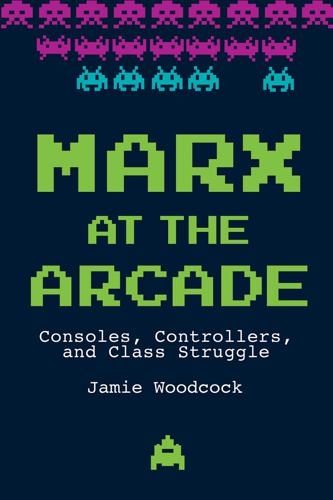
Marx at the Arcade: Consoles, Controllers, and Class Struggle
by
Jamie Woodcock
Published 17 Jun 2019
In one infamous example, players realized they could essentially kill a sim by removing the ladder to their pool, leaving the sim unable to climb out and causing them to eventually drown. As a developer on The Sims 4 noted, “[The] player reaction to a Sims game without pools was so intense that developers knew they had to rectify the situation as soon as possible.”6 The SimCity series exists on a larger scale. The subject is the city rather than the household, drawing the focus onto a larger and more anonymous mass of citizens. SimCity taps into a similar sandbox/dollhouse experience. It also often demonstrates how much more effectively the player could handle traffic problems than local government in the real world. The city begins as a tabula rasa, with the player able to generate the landscape from which they can begin planning the city.
…
I felt at the time that Civilization was not just a game but that it had educational value—another reason for “just one more turn.” My paper manual for Street Fighter Alpha 2 had all the pages torn out, so I had to try and learn the moves with friends while we battled it out in front of the TV. I built sprawling metropolises in SimCity, astonished that I could then fly a helicopter through them in SimCopter. Baldur’s Gate was the closest I ever got to Dungeons & Dragons: I would meet with friends to compare notes on how the characters and story developed. Moving on from those games, I explored postapocalyptic wastelands in Fallout and played for the evil side in Dungeon Keeper.
…
Rather than carrying out the military’s previous priority of strategizing for war itself, this product was more about seeing how potential soldiers could be reached through videogames, which signaled how popular games had become. Meanwhile, simulation games, like The Sims, were becoming vastly popular, building on the success of Utopia, Populous, Civilization, and SimCity.80 Valve, the publisher of the seminal Half-Life, launched the online distribution platform Steam in 2003. This move built on the success of the modification (mod) of Half-Life into Counter-Strike, a series that today continues to be incredibly popular as an esport—played in professionalized videogame tournaments.

You've Been Played: How Corporations, Governments, and Schools Use Games to Control Us All
by
Adrian Hon
Published 14 Sep 2022
We hear about the few exceptions, like how Minecraft can teach children about programming and chemistry and ecology, but even then, proponents are silent about the proportion of time children spend in the game learning rather than messing about—not that there’s anything wrong with fun! It’s also tempting to believe games like Civilization and SimCity can teach us useful lessons about world history and city planning, that they both aim to reflect the real world and are successful in doing so, but in reality, they have done neither very well. Civilization’s “technology tree” is an elegant way of giving players meaningful strategic choices, but it promotes a flawed understanding of scientific discovery and cultural development. The conceptual framework that governs SimCity is based on a “capitalistic land value ecology” which may fit one corner of America in the late twentieth century but hardly describes cities in other countries, let alone alternative ideas of what a city can or should be.23 Again, there’s nothing wrong with optimising games for fun, as Sid Meier and Will Wright did when designing these classics.
…
As for those nongame purposes, pick any human need or endeavour you can imagine—education, health, science, politics, companionship, terror, and of course, material gain. This means there’s no bright line for what counts as gamification—it’s more of a family resemblance, encompassing everything from SimCity and Peloton to frequent-flyer programmes and Chinese social credit systems. It also means that one can find examples of gamification going back decades and even centuries, long before the term gained wide usage in the first decade of the 2000s. This book covers some of those older examples, but for the purposes of brevity, it is not an exhaustive record of all of gamification or its history.
…
Not long after he wrote these words, educational board games grew into a flourishing transatlantic market, teaching everything from geography and history to maths and astronomy.1 These games were enabled by technological advancements of a different kind that made the manufacturing and publishing of board games much cheaper than before. Locke might have admired educational board games, but he’d have loved educational video games like SimCity and Minecraft that can teach urban planning and architecture and programming. Only by learning the history of how games have been used for purposes beyond entertainment can we understand how gamification has taken such a large role in our lives, and how it might come to dominate the world. There is still some debate in the games industry and among academics as to what precisely constitutes gamification, and it’s easy to get mired in definitional quicksand involving related terms like exploitationware, the “gameful world,” and ludification.
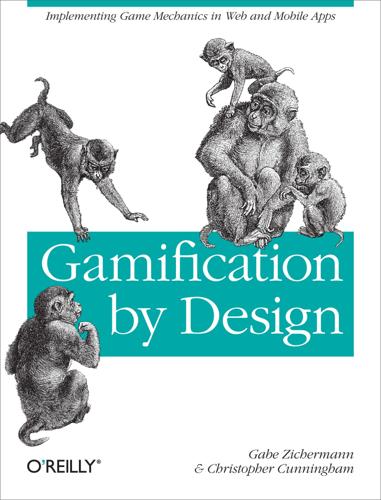
Gamification by Design: Implementing Game Mechanics in Web and Mobile Apps
by
Gabe Zichermann
and
Christopher Cunningham
Published 14 Aug 2011
Since then, thousands of educational software companies have attempted and failed to create another sensation. Figure 1-2. “Where in the World Is Carmen Sandiego?” is among the best-selling educational games of all time, and was popular among teachers, parents, and students alike. So, where in the world is the next big hit? Games aligning entertainment and education like Civilization and SimCity have taught millions of people history lessons and the basics of urban planning. These are not pedagogical games. They weren’t designed to be educational. But they use history and real city schema as a backdrop to explain ideas; thus, education becomes a byproduct of fun. This is precisely the opposite of what has happened to educational software.
…
Organizing and Creating Order Many players are attracted to the idea of organizing things into neat, orderly sets. Not unlike collecting, this drive tends to be rewarded at the end of a particular loop or level. Some games and game-like experiences exploit this in a very unstructured but suggestive way. For example, SimCity allows players to express whatever level of order on their created world they believe is appropriate. Many players would choose to design highly structured and organized cities, even though there was no explicit reward or benefit to doing so in the game. Apparently it was for the players’ own enjoyment, or possibly to get back at undisciplined urban planners.
…
Gaining Status Schell, Jesse, Choosing the Right Fun Things Schwartz, Barry, The Tyranny of Choice score-sorting scope (example), Optimizing Leaderboard Output scores, Extending the User Model to Scores and Levels, Adding a Player’s Score and Level to the Sidebar, Adding a Player’s Level to Topic Posts displaying on forums site (example), Adding a Player’s Score and Level to the Sidebar, Adding a Player’s Level to Topic Posts adding player’s score to sidebar, Adding a Player’s Score and Level to the Sidebar, Adding a Player’s Level to Topic Posts extending User model to set scores, Extending the User Model to Scores and Levels search criteria, defining for a model, Optimizing Leaderboard Output Second Life, lawsuit against, Policing Your System secondary markets, virtual economies and, Virtual economies and secondary markets self-policing system, Gaming the System Selvadurai, Naveen, Empty Bar Problem: Foursquare sensitive or private information, leaderboards and, Privacy and Leaderboards sex, as powerful human motivator, Powerful Human Motivators Sherpa, being, Motivational Moment: Be the Sherpa shout-outs, 6. Flirtation and Romance side conversations on Quora, Channeling trolls and side conversations sidebar on forums site, displaying player’s score and level, Adding a Player’s Score and Level to the Sidebar sign-up bonus, awarding in forum application, Awarding a sign-up bonus SimCity, Fun Is Job #1, 4. Organizing and Creating Order order and organization in created worlds, 4. Organizing and Creating Order single-player games, starting design process with, Cooperative Quests Siriano, Christian, Status at the Wheel site activity, displaying, Step 9: Creating an Activities Widget skill points, Skill points Skinner, B.F., Reinforcement Skumo site for finding local businesses (example), Critical Elements of an Online Rewards Experience, Skumo’s objectives, Designing the Games, Level design recommendations, Example rewards structure, Developing a Rewards Program, Step 2: Calling the API, Step 4: Register and Track Players, Step 6: Creating a Leaderboard, Step 9: Creating an Activities Widget Activities widget, Step 9: Creating an Activities Widget business objectives, Skumo’s objectives code calling Badgeville API, Step 2: Calling the API comment badges, Developing a Rewards Program designing the games, Designing the Games leaderboard, Step 6: Creating a Leaderboard levels design, Level design recommendations rewards structure, Example rewards structure tracking behavior of registered players, Step 4: Register and Track Players slot machines, The Fun Quotient, Reinforcement, 3.
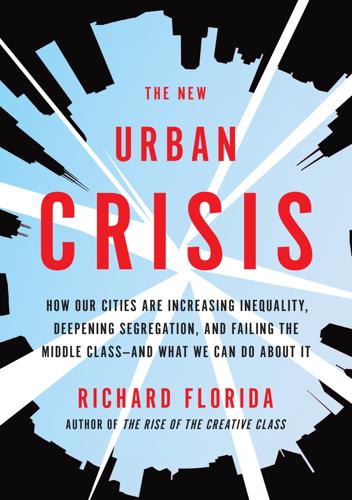
The New Urban Crisis: How Our Cities Are Increasing Inequality, Deepening Segregation, and Failing the Middle Class?and What We Can Do About It
by
Richard Florida
Published 9 May 2016
Finally, Chapter 10 charts the path forward, highlighting what our cities, our nation, and the world must do to overcome the deepening divides of winner-take-all urbanism and inaugurate a new era of urbanism for all. 2 WINNER-TAKE-ALL URBANISM In the fall of 2013, in a hotel suite overlooking New York City’s Times Square, the computer gaming giant Electronic Arts unveiled Cities of Tomorrow, the latest addition to its hugely successful SimCity franchise. Rather than racking up points the usual way, by killing bad guys, players of SimCity games take charge of cities. In the role of mayor, they have the power to change things like tax rates, zoning ordinances, and land use regulations, and to do things that boost economic development and create jobs. Then, by clicking on individual citizens, players can see the effects their changes are having on people’s lives.
…
Scott and Michael Storper, “The Nature of Cities: The Scope and Limits of Urban Theory,” International Journal of Urban and Regional Research 39, no. 1 (2015): 1–15. CHAPTER 2: WINNER-TAKE-ALL URBANISM 1. Geoff Manaugh and Kelsey Campbell-Dollaghan, “Sneak Peek of SimCity: Cities of Tomorrow,” Gizmodo, October 11, 2013, http://gizmodo.com/sneak-peek-of-simcity-cities-of-the-future-1443653857. 2. As far as I can tell, the phrase superstar cities was introduced in a 2013 study by economists Joseph Gyourko, Christopher Mayer, and Todd Sinai to identify US cities where housing prices consistently outpaced prices in other cities and appreciated at a rapid clip.
…
See economic segregation Segregation-Inequality Index defined, 220 economic inequality and, 99, 112–114, 113 (fig.), 192, 220, 225 (table) self-employment, 179–180 Sellers, Jefferey, 165 Seoul, 16 (table), 17 service class creativity and, 206 defined, 217 disadvantages of, xiv, xvi, xviii, 6–7 family-supporting work for, 11, 202–206 growth of, 203 housing costs and, 37, 199 in Patchwork Metropolis, 122–123, 130–135, 137–139, 141–147, 149 segregation of, 104–108, 107 (table) wages of, 31–32 Shanghai, 44 (table), 45 Sharkey, Patrick, 117 Silicon Valley, 42, 45, 47, 175 Silva, Rohan, 36 SimCity, 13 Singapore, 16 (table), 17, 42 skyboxification, 103 Smith, Adam, 26 Smith, Patti, 35 social safety net, 204, 209–210 Social Security Act, 204 SoHo, xvi, 2, 19–20, 20 (fig.) creative class and, 36 history of, 61–62 Solnit, Rebecca, 47–48 spatial division of labor, 18 specific creative-class occupations, variable of, 221 startup cities creative class in, 46–48 creativity in, 46–47, 50–55, 52 (fig.)
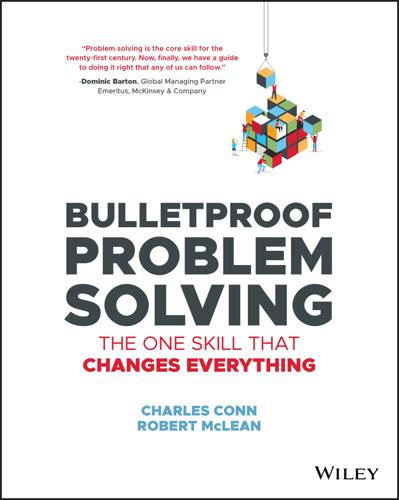
Bulletproof Problem Solving
by
Charles Conn
and
Robert McLean
Published 6 Mar 2019
And because you ran a randomized experiment, you know that it's more likely the design—not other variables—influencing user experience. A/B Testing Electronic Arts (EA) recently used an A/B test to explore the impact of sales and promotions on the sale of new game releases.10 Driven by revenue targets coincident with the release of the next version of SimCity, SimCity 5, EA was surprised when the initial advertising layout of the website with a promotional offer in a headline banner were not generating rising pre‐orders. Could it be that the pre‐order call to action was incorrectly placed? Their team constructed several additional variations on the pre‐order page and randomly exposed the site visitors to the different options, say A/B/C/D.
…
Option A, without any promotion at all, and Option B with a promotional banner, are shown in Exhibit 6.6. EXHIBIT 6.6 The team concluded that the site with no promotional offer led to 43.4% more purchases of the new game edition, a significant increase. Here A/B testing allowed them to experimentally explore their customers' responses to sales and advertising. In the process they learned that SimCity customers' decision to purchase was not contingent on a promotion. This kind of testing is particularly easy to do in online environments, but can also be employed in different cities or at the retail store level to generate similar results. Real‐world experiments are harder when large numbers are required to create controls for confounding factors, as is often true in healthcare examples, or where it is unethical to expose people to experimental choices without their consent.
…
Krzystztofowicz, “Bayesian Re‐Analysis of the Challenger O‐ring Data,” Risk Analysis 28, no. 4 (2008): 1053–1067. 9 The Book of Why by Judea Pearl and Dana Mackenzie (Allen Lane, 2018) has a good example of confounding factors with the example of the correlation between Nobel Prize winners and per capita chocolate consumption of the country they come from. Wealthy countries invest more in education and eat more chocolate, so the wealth and location of prizewinners are confounders. 10 https://blog.optimizely.com/2013/06/14/ea_simcity_optimizely_casestudy/. 11 The Economist article referenced the work of Hsiang, Kopp, et al. (“Estimating Economic Damage from Climate Change in the United States,” Science 2017) that with each 1 degree Fahrenheit increase the cost of climate change for the United States would be an aggregate reduction of .7% of GDP. http://science.sciencemag.org/content/356/6345/1362.full?

Smart Cities: Big Data, Civic Hackers, and the Quest for a New Utopia
by
Anthony M. Townsend
Published 29 Sep 2013
Couldn’t it happen that, instead of the Mirror World tracking the real world, a subtle shift takes place and the real world starts tracking the Mirror World instead?”92 Computer simulations seduce precisely because they replace the complexity of the real world. The video game SimCity is addictive because of the simplicity of its underlying model—players quickly figure out how to win by exploiting its predictable dynamics (in fact, the design of early versions was directly borrowed from Urban Dynamics. Following trends in research, SimCity 2013’s GlassBox simulation engine now uses a sophisticated agent-based model).93 But even the best mathematical models of real-world phenomena are always approximations.
…
Raney et al., “An agent-based microsimulation model of Swiss travel: First results,” Networks and Spatial Economics 3, no. 1 (2003): 23–42. 87Michael Batty, telephone interview by author, August 19, 2010. 88“Heisenberg-Quantum Mechanics, 1925–1927: The Uncertainty Principle,” American Institute of Physics, n.d., accessed February 26, 2013, http://www.aip.org/history/heisenberg/p08.htm. 89Asimov, Foundation, 14. 90Lee, “Requiem for Large-Scale Models,” 167. 91Harrison, interview, May 9, 2011. 92Gelernter, Mirror Worlds, 217, Gelernter’s italics. 93“SimCity and Advanced GeoAnalytics,” SpatialMarkets blog, March 16, 2012, http://www.spatialmarkets.com/2012/3/16/simcity-and-advanced-geoanalytics.html. 94Lee, “Requiem for Large-Scale Models,” 169. 95Banavar, lecture, April 10, 2012. 96Gelernter, Mirror Worlds, 222. Chapter 3. Cities of Tomorrow 1Ebenezer Howard, Garden Cities of To-morrow (London: Swan Sonnenschein & Co., Ltd., 1902), 18–26. 2Robert H.
…
The study was subsequently published on the arXiv e-print archive. Elsa Arcaute et al., “City boundaries and the universality of scaling laws,” January 8, 2013, http://arxiv.org/abs/1301.1674. 56Cosma Rohilla Shalizi, “Scaling and Hierarchy in Urban Economies,” ARXIV, e-print arXiv:1102.4101, February 2011, http://arxiv.org/abs/1102.4101. 57Steve Lohr, “SimCity, for Real: Measuring an Untidy Metropolis,” New York Times, February 23, 2013, BU3. 58Geoffrey West, lecture, Urban Systems Symposium, New York University, New York City, May 12, 2012. 59“Thinking Cities: ICT is Changing the Game,” Telefonaktiebolaget LM Ericsson, last modified February 24, 2012, http://www.ericsson.com/news/120221_thinking_cities_ict_is_ changing_the_game_244159020_c. 60Hirshberg, interview, October 26, 2011. 61Michael Batty, interview, August 19, 2010. 62William Bruce Cameron, Informal Sociology: A Casual Introduction to Sociological Thinking (New York: Random House, 1967) 13. 63Upton Sinclair, The Jungle (New York: The Jungle Pub.

Blood, Sweat, and Pixels: The Triumphant, Turbulent Stories Behind How Video Games Are Made
by
Jason Schreier
Published 4 Sep 2017
Few things inspire more anger from video game fans. * Thanks to network issues, SimCity was essentially unplayable for days after it launched in March 2013. Even when the servers settled down and the game started working, players discovered flaws in the simulation: for example, cars would always take the shortest routes between destinations, even if those routes were full of traffic. Cops wouldn’t cross intersections. Trading didn’t function properly. At Kotaku, we created a special tag for the occasion: “SimCity Disaster Watch.” * BioWare later released free downloadable content that expanded and added more choices to Mass Effect 3’s ending.
…
But in 2012 and 2013, a different type of company won the award, beating out the likes of Comcast and Bank of America, as over 250,000 voters flocked to declare that the United States’ worst company was in fact the video game publisher Electronic Arts (EA). There were many reasons for this ignominious victory, including the rise of optional “microtransaction”* payments in EA games and the spectacular disaster of the publisher’s online-only SimCity reboot.* What may have rankled gamers most, however, was what they believed EA had done to BioWare. BioWare, a development studio founded in 1995 by three medical doctors who thought making games might be a cool hobby, leaped into fame in 1998 with the Dungeons & Dragons–based role-playing game Baldur’s Gate (a game so influential that it would play a major role in the stories of two other games in this book, Pillars of Eternity and The Witcher 3).
…
All winter, LucasArts’ management would proclaim that things were going to be OK, even telling employees not to bother handing out their résumés at the annual Game Developers Conference in March. The biggest rumor, as conveyed by several LucasArts employees, was that EA had a deal in place to buy LucasArts and finish production on Star Wars 1313 and First Assault. But then, the rumor alleged, the new SimCity turned out to be a debacle, which led to EA and its CEO, John Riccitiello, “mutually agreeing” to part ways, which caused the LucasArts deal to fall apart. Riccitiello, however, told me that these negotiations weren’t as close as LucasArts’ employees had believed. “Virtually everything gets discussed on some deal with somebody,” he said.
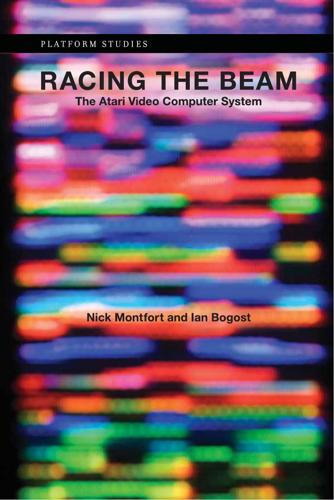
Racing the Beam: The Atari Video Computer System
by
Nick Montfort
and
Ian Bogost
Published 9 Jan 2009
Crane’s solution to the puzzle of ROM mapping a large world with little ROM was to not store the world in ROM at all. Instead, the world is generated, consistently, by code. Generated environments are common in games as far back as dungeon-crawlers like Rogue. But typically, after an environment is generated, it has to be stored in memory for use during play. For example, a new game of SimCity starts with a process of terraforming, in which the [110] land, seas, mountains, forests, and rivers are created. In order for the player to be able to build a city atop it, the terrain data must then be saved somewhere, either on disk or in RAM. The Atari VCS has no disk storage, of course, and its paltry 128 bytes of RAM often provides barely enough room to manipulate the state of the game.
…
Atari. 1980. M Network. Kool-Aid Man. Atari VCS and Intellivision. Mattel Electronics. 1983. Mattel. Simon. Handheld game. Engineered by Ralph Baer. 1978. Mayer, Steve, Dave Shepperd, and Dennis Koble. Starship 1. Atari. 1977. Mayfield, Mike. Star Trek. SDS Sigma 7 and HP minicomputers. 1971. Maxis. SimCity. PC and Commodore 64. Programmed by Will Wright. Brøderbund. 1989. Meier, Sid. Civilization. PC, Macintosh, and other home computers. MicroProse. 1991. Microsoft. Excel. Macintosh and Windows application with video game Easter Egg. 1985. Midway. Sea Wolf. Arcade. 1976. Midway. Defender. Arcade. Developed by Eugene Jarvis. 1980.
…
See Read-only memory Ross, Scott, 124 Russell, Steve, 7 Salvo, Ed, 128 Same-screen sprite register, 105 Scrolling, 106 Seaquest, 105, 132 Sears Telegames, 121 Sea Wolf, 86 Sega Master System, 134, 137 Sesame Street games, 124 Shark Jaws, 125, 126 Shaw, Carol, 104 Shay, Nukey, 77 Shooter games, 96. See also specific shooter games Side pager, 107 Side scroller, 107 Index Sigma 7 minicomputer, 125 SimCity, 110–111 Simon, 121 Skiing, 105 Skinning, 105 Sky Skipper, 123 Slocum, Paul, 132, 142 video games for the VCS (see Combat Rock; Synthcart) Slot machines, 7 Slot Racers boundaries for virtual space, 46 collision detection, 48 description of, 43 horizontal symmetry of playing field, 47 mazes, 68 playfield graphics, 48 programmer (see Robinett, Warren) single screen, 106 sprites, 108 VCS adaptation, 44 SLSA (Society for Literature, Science, and the Arts), 147 Smith, Bob, 88, 116 Smith, Jay, 121 Social context, of video games, 78–79 Society for Literature, Science, and the Arts (SLSA), 147 Soft censorship, 134 Software platforms, 148 Sonar Sub Hunt, 121 Sound.
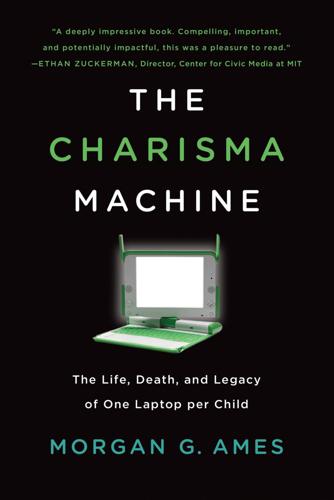
The Charisma Machine: The Life, Death, and Legacy of One Laptop Per Child
by
Morgan G. Ames
Published 19 Nov 2019
One can install a game, or any XO software, by downloading the activity bundle (a file with the extension .xo) from a website, which will automatically install it, or by using the xo-get program manager on the XO, modeled on the Linux utility apt-get (see Hager, [Olpcaustria] “xo-get & svg-grabber”). For instance, to install the game SimCity, an XO user can navigate to the SimCity page on the OLPC wiki (http://wiki.laptop.org/go/SimCity) and click on the link to the activity bundle, or she can acquire the bundle in some other way that doesn’t automatically install it—from a friend’s laptop, for instance—and then type “xo-get install simcity.xo” in the terminal. 35. OLPC Wiki, “Games.” 36. For a (somewhat gamer-centric) overview, see Gonzalez, “Two Tribes Go to War.” For a discussion of the context of the controversy, see King and Borland, Dungeons and Dreamers. 37.
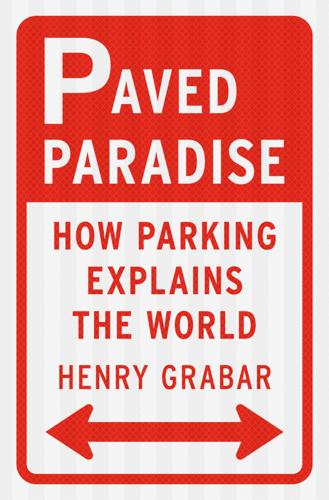
Paved Paradise: How Parking Explains the World
by
Henry Grabar
Published 8 May 2023
Go to note reference in text Philadelphia has 2.2 million: Scharnhorst, “Quantified Parking.” Go to note reference in text “When I started measuring”: Geoff Manaugh and Nicola Twilley, “The Philosophy of SimCity: An Interview with the Game’s Lead Designer,” Atlantic, May 9, 2013, theatlantic.com/technology/archive/2013/05/the-philosophy-of-simcity-an-interview-with-the-games-lead-designer/275724. Go to note reference in text the production of cement: Johanna Lehne and Felix Preston, Making Concrete Change: Innovation in Low-Carbon Cement and Concrete (London: Chatham House, 2018), chathamhouse.org/2018/06/making-concrete-change-innovation-low-carbon-cement-and-concrete.
…
Many American downtowns, such as Little Rock, Newport News, Buffalo, and Topeka, have more land devoted to parking than to buildings. Dodger Stadium, Los Angeles. Ten additional Dodger Stadiums would fit inside the ballpark’s parking lot. In the mid-aughts, when the team of programmers at Maxis were working on the first new SimCity in a decade, they studied American municipal architecture, politics, and urban design to try to produce a compelling simulacrum. Lead designer Stone Librande used Google Earth to measure his surroundings. The biggest surprise he found was the size of the parking lots. “When I started measuring out our local grocery store, which I don’t think of as being that big, I was blown away by how much more space was parking lot rather than actual store,” he said.
…
See shopping centers management, 85, 202, 260–61 mandates, costly parking, 209 Manhattan, New York, 87, 101–2, 107, 148, 254–55 street parking in, 31–33, 35–36, 37–39, 41, 45, 99–100 traffic agent in, 33–34, 37–39 Manville, Michael, 157, 167, 193 Marina City, Chicago, 128 market demand, parking policy compared to, 86 Markowitz, Marty, 256 Marsden, Brett, 112 Marusek, Sarah, 22 Maryland, Silver Springs, 68 Massachusetts, 76, 85, 109, 205 Boston, xii, 20, 86, 94 mass production, of automobiles, 55 Matta-Clark, Gordon, 251 Maxis, SimCity of, 76 McCahill, Chris, 82 McCardell, William, 95–96, 98 McClintock, Miller, 53 McClure, Paul, 23 McCourt, Randy, 159 McGlockton, Markeis, 23 McKenna-Foster, Daniel, 155–57, 160 McNew, James, 93 Mebrahtu, Freweyni, 95 Melbourne, Australia, 21 Mell, Richard, 126 merchants, in downtown, 29, 54, 58–59, 72 meter maids, police attacking, 36–37 meters, parking, 161–62, 163, 165, 166–67, 168–69 in Chicago, 121–22, 123–24, 127, 132–34, 137–38, 139, 140, 143, 198–99, 203–4, 260 Mexico City, minimum parking laws in, 273, 274 Meyer, Chris, 204 Miami Beach, Florida, 92 Michigan, 59–60, 63, 65, 74, 152–53 Millard-Ball, Adam, 83 Millennium Park, Chicago, 122–23 Miller, Bella, 110 Milliron’s, big-box store of, 59 Minneapolis, Minnesota, 55, 204, 214 Minnesota, 55, 60, 111, 204, 214 mismanagement, of commercial parking, 19–20 Missouri, Ferguson, 163–64 Mister Softee, 248–50 Mitchell, Joni, 160 mixed-use buildings, 217 models, parking, 128, 180, 183, 219 Mohammad Abu-Salha, Yusor, 23 monopolies, in commercial parking, 109–10 Moore, Joe, 134 Moore, Michael, 9 Morgan Stanley, 125, 126, 136, 140–41, 142 parking meters of, 121–22, 123–24, 132–34 Morono, Leon, 103 Mumford, Lewis, 72 municipal parking, 67–68, 73 murders, 22–23, 37, 150 N Najdovski, Christophe, 274–75 Naqvi, Ali, 113–14 National Conference of Housing (1929), 237–38 National Municipal League, 64 National Parking Association (NPA), 105, 106–7, 112 Neal, Esther, 35 Neumann, Adam, 110 Nevada, Las Vegas, 181, 243 Newark, New Jersey, 98–99 Newport News Shipbuilding, Virginia, 25 Newsom, Gavin, 212 New York, 20–21, 52, 66, 85–86, 238, 262 bicycles in, 256, 257–58 during coronavirus pandemic, 270–72 Dumbo in, 252, 254 Genovese crime family in, 101–3 government employees in, 43, 45 Manhattan, 31–34, 35–36, 37–39, 41, 45, 87, 99–100, 101–2, 107, 148, 254–55 Operation Meltdown in, 250, 259 parking garages in, 99–103 parking requirements in, 215 parking supply in, 75 parking whisperer in, 26 pedestrians in, 253–55 Queens, ix–x, xiv, 82 Rochester, 63 Rockaway Beach, 9 street parking in, 247–48, 258, 263–64, 271 Syracuse, 58–59 towing service in, xv traffic in, 53 New York Daily News (newspaper), 48–49, 264–65 New York Ice Cream, 249–50 New York Police Department (NYPD), 40, 47, 48, 50 New York-Presbyterian Healthcare System, 107 The New York Times (newspaper), 37, 48, 64, 264 Nichols, Chrissy Mancini, CPM relation to, 198–99 Nichols, Mike, 15 Nixon, Richard, 92, 228 Norris, Mary, 41 North Carolina, Charlotte, 216–19 Northland shopping center, Detroit, 59–60, 65 North Plano, Texas, 223 Norway, Oslo, 274 NPA.
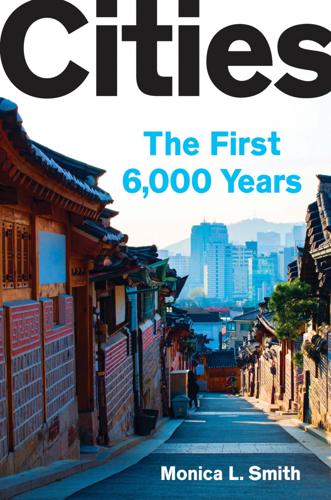
Cities: The First 6,000 Years
by
Monica L. Smith
Published 31 Mar 2019
Inspired by the inherent link between trees and good governance, urban leaders around the world have started tree-planting programs, including the Million Trees initiatives of New York and Los Angeles, as well as the Green Delhi program and the Huangpu East Bank Urban Forest of Shanghai. And if we want a true measure of the extent to which the presence of nature is understood as a component of urban environments, we need look no further than simulator games like SimCity and Cities: Skylines. No matter how futuristic their constructions, there are always trees in the landscapes of imagined cities. The inescapability of nature in urban areas confirms that our place in the world as a biological species is hardly budged by the fact that for the past six thousand years we have surrounded ourselves with buildings, paved pathways, city walls, and water and food supplies that come from far away.
…
Marzluff, “Small Birds Use Their Brains to Live Among Us,” Psychology Today, Feb. 25, 2013, www.psychologytoday.com. Peregrine falcon populations: Marcel A. Gahbauer et al., “Productivity, Mortality, and Management of Urban Peregrine Falcons in Northeastern North America,” Journal of Wildlife Management 79, no. 1 (2015): 10–19. SimCity and Cities: Skylines: “Amazingly Detailed Metropolises Recreated in Cities: Skylines—in Pictures,” Guardian, July 15, 2015, www.theguardian.com. a technique called stable-isotope analysis: Gideon Hartman et al., “The Pilgrimage Economy of Early Roman Jerusalem (1st Century BCE–70 CE) Reconstructed from the δ15N and δ13C Values of Goat and Sheep Remains,” Journal of Archaeological Science 40 (2013): 4369–76.
…
Francis Dam, Los Angeles, 208–9 Salisbury Plain, 71, 96–97 Sam’al (Zincirli Höyük), 125 Sanders, Steven, 207 San Francisco Millennium Building, 206, 207 sanitation, 133–40 satellite archaeology, 62–64 Satire of the Trades, The, 189–90 Satyricon, The (Petronius), 212–13 Schaps, David M., 172 Scheld, Suzanne, 161 seaports, 166 seasonality, 233–34 sedentary lifestyle, 223 senatus consulto (SC), 175 Severan Marble Plan, 31–32, 33, 37, 51 sewage, 133–40 sewers of Paris, 137–38 shamans, 7 Shanghai, 108–9, 110–11 shell beads, 102–3 Shulak, 135-36 sidewalks, 135, 140–41, 231, 246 Silk Road, 27, 172, 179 Silverstein, Michael J., 196–97 SimCity (video game), 231 Sisupalgarh, 5, 252–53, 256 challenges of excavation, 55, 126 mason’s handprint, 47–48 street layouts, 38 surface survey, 61–62 trash deposits, 155, 157–58, 159–60 slums, 108–13 Smith, Adam, 115, 272n social relations, 35–36, 246–47 socioeconomic status, 62, 132, 156, 192, 196–97, 207 soil and soil samples, 49, 52 Solórzano Pereira, Juan de, 194, 242 songbirds, 230 South Africa, 224–25 souvenirs, 178–80 Spanish conquest of Aztec Empire, 20–23 of Inca Empire, 23–24 sparrows, 230 speech, 91–95, 99 Sri Lanka, 27 status, 62, 132, 156, 192, 196–97, 207 Steedman, Ian, 211–12 Stiner, Mary, 102–3 Stonehenge, 6, 71–72, 117, 120, 249 stratigraphy, 46–47 streets, 140–45 “strong ties,” 98 subsidence, 206–7 surface survey, 59–62 Susa, 191, 238 Tabula Peutingeriana, 226 take-out food, 167–69 Taxila, 49 telephone lines, 147–48 Tell Brak, 59, 76–79, 85, 261 eye idols at, 66, 77–79 “first” city, 76–79, 89, 268–69n Mallowan dig at, 54, 57, 64–65, 76, 77–78, 79 physical crimes at, 213–14 water and waste, 136 Temple of Peace, Rome, 31 Templo Mayor of Tenochtitlan, 205–7, 250 Tenochtitlan, 22–23, 245 middle managers, 205–8 Templo Mayor of, 205–7, 250 urban collapse, 254 Teotihuacan, 13, 36, 59, 89, 244, 245 apartment complexes, 112–13, 215–16 layout, 39 people and pathways, 143 population, 279–80n reconstruction, 249–50 trade, 166 urban collapse, 254 water and waste, 136 Tepe Sharafabad, 51–52, 85 terra sigillata, 249 Thames River, 139 Theory of the Leisure Class, The (Veblen), 165 Thucydides, 278n Tigris River, 85 Tikal, 89, 154, 228, 250, 253 Till, Jeremy, 38–39 Timbuktu, 27 time management, 211–12 toilets, 135, 136–37 Tokyo Edo period, 163–64 Tsukiji fish market, 2–3 Tomb of Puabi, 82, 85 tombstones, 196 toolmaking, 96–97, 100 tourism, 162–64 Tower Bridge, London, 109 trade, 27, 165–67, 197–98 Trading Up: Why Consumers Want New Luxury Goods (Silverstein and Fiske), 196–97 transportation infrastructure, 140–45 transport modes, 19–20 trash, 153–60, 180–81 waste infrastructure, 133–40 trash piles, 44, 154–55 Monte Testaccio, 1–3, 159–60, 166 Triple Alliance, 22 T-shirts, 178–79 Tsukiji fish market, 2–3 Tushan, 246–48 Tutankhamun, 81 tzompantli, 205–6 “ugly artifact,” 152, 153 unfamiliarity, 8 University College London, 71–72 University of Michigan, 153 University of Pennsylvania, 81 uniwheels, 141 Ur, 61, 80–82, 85, 245 Ur of the Chaldees (Woolley), 81–82 Ur, Jason, 64, 86, 142 “urban” vs.

From Airline Reservations to Sonic the Hedgehog: A History of the Software Industry
by
Martin Campbell-Kelly
Published 15 Jan 2003
From their earliest days, videogames had been classified as “racin’, fightin’, or shootin’.” With time, more complex classification systems emerged in the industry and in gaming magazines (table 9.4). No two classification systems were quite alike, and many games were not easy to categorize. (Was the ubiquitous Tetris a puzzle, or a strategy game? Was SimCity a simulation, or a strategy game?) In any case, precise classification was an academic problem. The point of genre publishing was that certain categories of game appealed to large groups of users and therefore had less need to overcome market inertia. The most successful games became subgenres, and transferring hit games to all the available gaming platforms was a major source of revenue.
…
The most popular videogame characters and Table 9.4 J. C. Herz’s phylogeny of video games. (Publication dates represent when games were introduced in the US. All games listed are currently in production—not necessarily with the original publisher, and usually with a minor title change to indicate the latest versions—e.g., SimCity 2000, Tiger Woods PGA Golf 2001.) Genre Action “The largest phylum in videogamedom, comprising most of the home console universe and virtually all arcade games; these games are also known as ‘twitch’ games and ‘thumb candy’.” Adventure “Adventure games are about accumulating an inventory of items that are then used to solve puzzles.”
…
(Nintendo, 1985) Sonic the Hedgehog (Sega, 1985) Prince of Persia (Mindscape, 1989) Zork (Infocom, 1980) Legend of Zelda (Nintendo, 1986) Myst (Cyan, 1993) Street Fighter (Capcom, 1987) Virtua Fighter (Sega, 1993) Tekken (Nameco, 1995) Tetris (Spectrum Holobyte, 1986) Ultima (Origin Systems, 1980) Wizardry (Sir-Tech, 1981) Final Fantasy (Square, 1987) Flight Simulator (SubLOGIC, 1978) SimCity (Maxis, 1989) Gran Turismo (Sony Computer Entertainment, 1998) PGA Tour Golf (Intellivision, 1983) NHL Hockey (Intellivision, 1983) Populous (Electronic Arts, 1989) Railroad Tycoon (Microprose, 1990) Civilization (Microprose, 1991) Quotations and classification from pp. 24–31 of Herz, Joystick Nation; data on classic games from various web sites.
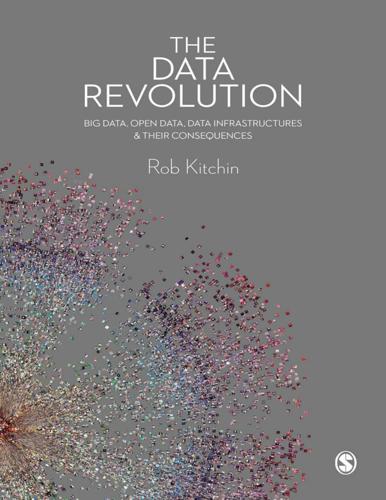
The Data Revolution: Big Data, Open Data, Data Infrastructures and Their Consequences
by
Rob Kitchin
Published 25 Aug 2014
The aim is to determine how a system functions and how it might behave under different scenarios, and to statistically evaluate their performance with a view to improving their efficiency and effectiveness (Robinson 2003). A popular example is the computer game SimCity which simulates how a city will grow and develop under the conditions of the players choosing, based on an underlying model of known urban processes. Likewise, weather forecasts are based on simulations of how the weather will develop given prevalent conditions and scientific knowledge. There are many different kinds of simulation models, many of which utilise machine learning in order to automatically refine the model and to deal with emergent properties such as unforeseen events. SimCity is an agent-based model (Batty 2007). The model consists of an environment where individual features such as buildings and roads are assigned certain characteristics.
…
Linehan, T.P. (1991) History and development of Irish population censuses’, Journal of the Statistical and Social Inquiry Society of Ireland, XXVI(IV): 91–125. Lohr, S. (2012) ‘Sure, big data is great. But so is intuition’, New York Times, 29 December. http://www.nytimes.com/2012/12/30/technology/big-data-is-great-but-dont-forget-intuition.html (last accessed 3 January 2013). Lohr, S. (2013) ‘SimCity, for real: measuring an untidy metropolis’, New York Times, 23 February, http://www.nytimes.com/2013/02/24/technology/nyucenter-develops-a-science-of-cities.html (accessed 1 April 2013). Longo, J. (2011) ‘#OpenData: digital-era governance: thoroughbred or new public management Trojan horse?’, PP+G Review, 2(2), http://ppgr.files.wordpress.com/2011/05/longo-ostry.pdf (last accessed 16 September 2013).

What Algorithms Want: Imagination in the Age of Computing
by
Ed Finn
Published 10 Mar 2017
The participants in the Critical Code Studies Working Group adopt familiar tactics of close reading and intensive contextual scrutiny, but at a lower rung in the layer of computational abstraction, reading software itself as cultural text. This frame can generate breathtaking insights into the gap between abstraction and implementation, for example by revealing the ideological assumptions of SimCity’s crime rate calculations, as digital culture scholar Mark Sample has done.13 These critics perform their debates algorithmically, through discussion on collaborative platforms and publication via open-access platforms like the electronic book review and Digital Humanities Quarterly. Indeed, one of the great challenges of editing the Critical Code Studies discussions for publication on ebr, where I served for a time as a thread editor, was capturing the vibrancy of computationally mediated discussion forum exchanges and distilling it into a more traditionally fixed textual format.
…
See also Siri; Star Trek computer Interface economy Airbnb and, 124 Amazon and, 124 arbitrage and, 123–131, 139–140, 145, 147 class and, 129–130 cloud warehouses and, 131–145 efficient access and, 127–128 faking sincerity and, 146–147 Google and, 124 individualism and, 126–127 intimacy and, 129 labor and, 123–145, 147 Mechanical Turk and, 135–145 moral machinery and, 144–149 Netflix and, 124 remobilization of capitalism and, 127 sharing economy and, 54, 123, 127–129, 145, 148 Uber and, 123–133, 145, 147 worker conditions and, 132–134, 139–140 work of algorithms and, 123–145 wrappers and, 129 Interface Effect, The (Galloway), 143–144 Interfaces abstraction and, 52, 54, 92, 96, 103, 108, 110–111 API, 7, 113 Bogost and, 49 clean, 8, 96, 110 community and, 52 conscious, 36 cultural processing and, 16 customized, 36 fetish and, 35 Google and, 66–67 imagination and, 189 layers of, 12, 52, 123, 126–131, 140–141, 144, 189 metaphor and, 25, 60 Ramsey and, 52 Siri and, 59–60, 63, 75, 77 Star Trek computer and, 67–68 transparency and, 189 Uber and, 54 visual abstractions and, 25 Intimacy algorithms and, 4, 11, 35, 54, 65, 74–78, 82–85, 97, 102, 107, 128–130, 172, 176, 185–189 Google and, 75–76 interface economy and, 129 meaning and, 75 Memex and, 186–189, 195 mining value and, 176–177 Samantha (Her) and, 77–85, 154, 181 iTunes, 161 Jackson, Samuel L., 59 Jenkins, Henry, 102 Johansson, Scarlett, 78 Jonze, Spike, 11, 77–79, 84–85 Journalists, 3 automatization and, 38 Bitcoin and, 12 cultural values and, 171–172 Facebook and, 116, 170, 172 gamification and, 116 Gawker Media and, 170–175, 210n35 Google and, 75 Siri and, 58 Thiel and, 170–171 transactional algorithms and, 151 “Trending Topics” widget and, 180 Uber and, 129 Kael, Pauline, 175 Kasparov, Gary, 135–138 Kindle, 195 Kirschenbaum, Matthew, 47–48 Kiva Systems, 134 Kline, Ronald, 31 KnowledgeGraph, 71–73, 75, 94 Knuth, Donald, 17–18 Kurzweil, Ray, 184 Labor, 7, 18, 46, 122 Adam Smith on, 146 affective, 145–148 arbitrage and, 97, 112, 123–145 Bitcoin and, 164, 178 capitalism and, 165 cloud warehouses and, 131–445 culture machines and, 93, 119 deep structures of, 123 faking sincerity and, 146–147 feedback systems and, 145–148 HITs and, 135, 139, 141, 145 identity and, 146–147 intellectual, 12 interface economy and, 123–145 ludic, 120 mandatory smiles and, 146 Marx on, 165 Mechanical Turk and, 135–145 pickers and, 132–134 Taylorism and, 93 worker conditions and, 8, 132–134, 139–140 Lambda calculus, 24 Langlois, Ganaele, 111 Language abstraction and, 2, 24 advertisements and, 178 algorithms and, 24–28, 33–41, 44, 51, 54–55 cognition and, 39 color words and, 4 culture machines and, 39–40 epistemological layers and, 4, 11, 148, 155, 157, 175, 177, 188 ethos of information and, 159 grammar and, 2, 16, 25, 38–41, 62–64, 110–112, 138, 178–179 imagination and, 38, 185, 196 incompleteness and, 24, 40 as intellectual technology, 4 intelligent assistants and, 11, 57, 62, 64–65, 77 machine learning and, 2, 112 many registers of, 1–2 mathematics and, 2, 55 meaning and, 1 metaphor and, 183–184 (see also Metaphor) natural language processing (NLP) and, 62–63 of new media, 112, 122 plasticity and, 38, 191 power of, 1–2, 4–5 procedural, 3–4, 6 reality and, 1 rhetoric and, 6, 16, 22, 30, 45, 89, 96, 101, 104, 110, 112, 123, 127, 136 Siri and, 57–65, 71–84 spoken, 2, 58, 60, 62–63, 67, 84, 185 symbolic, 2, 26, 38–41 tricks and, 3–4 Turing Machine and, 33, 41 universal, 5 vocabulary and, 2, 4, 25, 138, 160, 190 Wiener and, 28 Language of New Media, The (Manovich), 122 Lawsuits, 90, 171, 175 Leibniz, Gottfried Wilhelm, 25–27, 72 Lem, Stanislaw, 184 Levy, Steven, 3 Lewis, Michael, 12, 151, 153, 168 Leyden, Peter, 160 Library Computer Access/Retrieval System (LCARS), 67–68 Life magazine, 31 Literacy, 5, 39, 52, 75, 109, 129, 159, 177 LiveJournal, 209n20 Loebner Prize, 87, 203n50 Logic general substitutability and, 33 Gödel and, 24, 40 halting states and, 41–46 information theory and, 10, 27 invisibly exclusionary, 110 pragmatist approach and, 18–25, 42, 58, 62 process and, 41–46 proofs and, 15, 24–25, 41, 44 rationality and, 38, 40 symbolic, 2, 21, 24, 39, 41, 44, 54–55 “Long Boom, The” (Schwartz and Leyden), 160–161 Lyft, 123, 127–130, 145, 148 Machine learning artificial intelligence (AI) and, 2, 15, 28, 42, 62, 66, 71, 85, 90, 112, 181–186, 191 big data and, 90 computationalist approach and, 183 DeepMind and, 28, 66, 181–182 Google and, 66, 181–186, 191 imagination and, 181–186 language and, 2, 112 Netflix and, 182–183 neural networks and, 28, 31, 39, 182–183, 185 Siri and, 62, 182 (see also Siri) Turing Machine and, 182 (see also Turing Machine) Macy Conferences, 30, 199n42 Madrigal, Alexis, 92, 94–95 Magic agency and, 78 artificial intelligence and, 135–136 cached content and, 159 code as, 1–5, 8, 10, 16, 49–50, 196 computation as, 4, 8, 10, 46, 52, 59–60, 94, 96, 121, 161 constructed reality and, 39 curses and, 1 data cloud and, 131, 134 fantasy and, 121, 124, 126 government currency and, 172 hacker powers as, 3, 51 incantations and, 1, 3–5, 51, 196 invisible sides of system and, 178 machines and, 137–138, 188 Memex and, 188 metaphors for, 32–36 myths and, 1–2, 10, 16 ontology and, 62–65 ratings and, 130 rational language for, 25 shamans and, 1, 3, 5 Siri and, 59–60, 62–65 sourcery and, 3, 10, 17, 21, 33–34 symbolic, 105 Manjoo, Farhad, 75 Manovich, Lev, 112, 122 Market impacts advertisements and, 34 (see also Advertisements) arbitrage and, 152, 161 attention and, 119 automobiles and, 127 Bitcoin and, 163–180 crashes and, 151 cryptocurrency and, 160–180 digital identity and, 159 digital trading and, 152 eliminating vulnerability and, 161–162 encryption and, 153, 162–163 fungible space and, 54 gaming and, 119, 121 gaming the system and, 153 Google and, 66 high frequency trading (HFT) and, 151–158, 168–169, 177 hyperinflation and, 166 international trade and, 12 invisible hand and, 33 labor and, 8 (see also Labor) Mechanical Turk and, 135–145 NASDAQ and, 152 Netflix and, 87, 97, 107–110, 114–115 NYSE and, 152 parallel computing and, 139 pension funds and, 151, 168 Siri and, 59, 75–77 stock market and, 12, 15, 154 transaction fees and, 164–165 transparency and, 160–164, 168, 171, 177–178 virtuous action and, 146 Wall Street and, 16, 66, 109, 151, 153, 171, 185 Marx, Karl, 165 Master Algorithm, The (Domingos), 183 Materiality, 26, 47–49, 53, 133 Mathematics abstract symbolism, 2, 55 algebra, 17 Babylonian, 17 Berlinski and, 9, 181 calculus, 24, 26, 30, 34, 44–45, 98, 148, 186 complexity, 28 computationalist approach and, 23, 183, 185 Conway and, 29–30 culture machines and, 49–50 Descartes and, 26, 69, 75 effective computability and, 40 “extended mind” hypothesis and, 40 Fibonacci sequence, 17 Golden Ratio, 2 Hilbert and, 23 Hindu-Arabic numerals, 17 language and, 2, 55 Leibniz and, 25–26, 72 logic, 2, 10, 24 machine duplication and, 22 materiality and, 26 Moschovakis and, 17 Nakamoto and, 161–162 Netflix Prize and, 87–91 ontology and, 84 perceived reality and, 20 Post and, 9 Pragmatic Chaos and, 90 proofs, 15, 24–25, 41, 44 pure, 47 reality and, 34 Rendell and, 30 Shannon and, 27 Strogatz and, 44, 183 theory of computation and, 18 Turing and, 6–9, 23–30, 33, 39–43, 54, 73, 79–82, 87, 138, 142, 182, 186 Mathesis universalis, 25–26, 28, 72 Matrix, The (film), 3, 36, 109 Maturana, Humberto, 28–29 McClelland, Mac, 132–133 McCloud, Scott, 110, 154–155 McCulloch-Pitts Neuron, 28, 39 Meaning acceleration of epistemological change and, 188–189 algorithms and, 35–36, 38, 44–45, 50, 54–55 belonging and, 122 black boxes and, 7, 15–16, 47–48, 51, 55, 64, 72, 92–93, 96, 136, 138, 146–147, 153, 162, 169–171, 179 Chun on, 35 Cow Clicker and, 116, 118–119 cultural exchange and, 12, 111–112 data mining and, 175 decision-making and, 20, 28, 34, 37, 90 digital culture and, 3, 7, 18, 22, 43, 49, 66, 87, 156, 160, 191, 193–194 endless hunt for, 184 imagination and, 184 (see also Imagination) intimacy and, 75 language and, 1 Mechanical Turk and, 136–140 metaphor and, 183–184 (see also Metaphor) obfuscations and, 7, 55, 64 organization of, 8 PageRank and, 169 Siri and, 65 structures of, 89, 96 value and, 155 vs. information, 9, 9–10 Mechanical Turk Google and, 12, 135–145 history of original, 136–138 meaning and, 136–140 as metaphor, 143 von Kempelen and, 135 worker conditions and, 139–140 Mechanisms (Kirschenbaum), 47–48 Memex, 186–189, 195 Memory computation and, 18, 21, 37, 43–44, 51, 56, 58, 69, 75, 159–160, 176, 185–186, 191–193 culture and, 43 human, 37, 43–44 process and, 21 technical, 51, 192 understanding and, 37 Metaphor, 121 assumption of code and, 43 cathedral of computation and, 6–8, 27, 33, 49, 51 Church-Turing thesis and, 41–42 cloud, 131 for communication, 32–36 computational, 22 cultural, 50, 54 effective computability and, 34 human cognition and, 39 imagination and, 183–184, 189 interfaces and, 25, 60 Mechanical Turk and, 143 Netflix as, 96, 104 obelisk and, 155 reality and, 10, 50 Samantha (Her) and, 84–85 Microsoft, 97, 144, 152 Miners (Bitcoin), 165, 167–168, 171–172, 175–179 Money abstraction and, 153, 159, 161, 165–167, 171–175 algorithmic trading and, 12, 20, 99, 155 arbitrage and, 151–152, 155–163, 169–171, 175–179 Bitcoin and, 160–180 as collective symbol, 165–166 ontology and, 156–159, 178–179 Moore’s Law, 43 Morowitz, Harold, 23 Moschovakis, Yiannis, 17 Moth machine (Wiener), 31–32, 34 Musk, Elon, 191 My Mother Was a Computer (Hayles), 21, 93 Myths ancient, 28 Campbell on, 94 code and, 7–8, 16, 44 cultural space and, 5 culture machine and, 55 fantasy and, 78 government currency and, 172 human-computer interaction and, 36, 51 magic and, 1–2, 10, 16 material reality and, 47 ontology and, 26 origin, 68 personalization and, 106–107 power of language and, 6, 44, 196 Sumerian, 3, 5, 16 unitary simplicity and, 49 Nakamoto, Satoshi, 161–162, 165–167 Nam-shubs, 1, 3–6, 37–40, 56, 135 Nardi, Bonnie, 121 NASDAQ, 152 Natural-Born Cyborgs (Clark), 37 Natural language processing (NLP), 62–63 Natural selection, 44 Negri, Antonio, 145 Netflix, 161 abstraction of aesthetics and, 87–112, 205n36 abundant choices and, 176 arbitrage and, 94, 97, 109–112, 124 art of personalization and, 97–103 Bogost on, 92–95 business model of, 87–88 Cinematch and, 88–90, 95 commissioned shows of, 97–98 computationalist approach and, 90, 104 consumer desire and, 93–96 disruptive technologies and, 124 effective computability and, 93 Facebook and, 91, 110 fan making and, 100–101 FCC and, 90 genre categories of, 94 ghost in the machine and, 55, 95, 183 gutter problem and, 110 Hastings and, 97–98 House of Cards and, 11, 54, 92, 98–112, 192 influence of, 87 interface economy and, 124 Leibniz and, 26 machine learning and, 182–183 market issues and, 87, 97, 107–110, 114–115 metaphor and, 96, 104 ontology and, 92, 94, 96 original content by, 97–98 parsing data and, 182 personalization and, 97–103, 109 Pragmatic Chaos and, 89–90 predictor ensemble and, 89–90 quantum mechanics and, 91–94, 96, 99, 112 recommendation algorithm competition of, 87–91 rejection of big-data approach and, 11 serendipitous glitches and, 55 Spoiler Foiler and, 101–102, 108 streaming and, 90 system behavior and, 16 taggers and, 54, 88, 92–93, 96, 99 techno-utopian rhetoric and, 16 Neural networks, 28, 31, 39, 182–183, 185 New Digital Age, The (Schmidt), 66 Newitz, Annalee, 60 Newton, Isaac, 17, 166 New York Stock Exchange (NYSE), 152 New York Times, 170 Nielsen ratings, 102 Note Book (Nunokawa), 53 @NSA_prismbot, 194–195 Nunokawa, Jeff, 53 Nyby, Christian I., II, 95 Of the Subcontract, Or Principles of Poetic Right (Thurston), 12, 140–145 OK Google, 51 One-way functions, 162–163 Ontology Apple and, 62–63, 65 computationalist approach and, 8 consciousness and, 178 culture machines and, 62–65, 68–69 Google and, 159–160 ideology and, 68 imagination and, 69, 73–74 of information, 8, 63, 69–71 mathematics and, 84 meaning and, 8, 21–22, 26, 39 money and, 156–159, 178–179 Netflix and, 92, 94, 96 Siri and, 62–65, 71–73, 82, 84 work of algorithms and, 122 Open source software, 6, 162, 167 ORION, 19, 47 Orwellian surveillance, 132–134 Page, Larry, 155–156 PageRank, 20, 111, 155–159, 169, 177–178, 189 Pariser, Eli, 46, 50 Parisian Great Exhibition, 80 Pasquale, Frank, 21 Pension funds, 151, 168 Perfect knowledge, 13, 65, 71, 73, 190 Perry Mason (TV series), 95–96 Phaedrus (Plato), 37 Phoenix, Joaquin, 77 Pickers, 132–134 Pitts, Walter, 28 Planned Parenthood, 64 Plato, 4, 31, 37–38, 40, 82 Popova, Maria, 175–176 Post, Emil, 9 Pragmatic Chaos (Netflix), 89–90 Pragmatist approach algorithmic, 2, 18–25, 42 effective computability and, 25–26 experimental humanities and, 193 growing power of computation and, 27 justice and, 146 models of reason and, 47 reframing humanities and, 193 Siri and, 58, 62 Privacy, 49, 62, 75, 90, 160–161, 163, 173 Private keys, 163 Programmability, 16, 178 Programmable culture, 169–175 Programmed Visions (Chun), 33 Project Loon, 66 Proofs, 15, 24–25, 41, 44 Protocol (Galloway), 50 Public keys, 163 Purdy, Jedediah, 146–147 Quantum mechanics Netflix and, 91–94, 96, 99, 112 Wiener and, 26–27 Raley, Rita, 194–195 Ramsey, Stephen, 52 Raymond, Eric, 6 Reading Machines (Ramsey), 52 Religion, 1, 7, 9, 49, 69, 71, 80, 136 Rendell, Paul, 30 Rice, Stephen P., 144–145 Rid, Thomas, 199n42 Riskin, Jessica, 136–137 Robotics, 31, 34, 43–45, 132–134, 188 Rood of Grace, 137 Rotten Tomatoes, 96 RSE encryption, 163 Samantha (Her), 77–85, 154, 181 Sample, Mark, 194–195 Sandvig, Christian, 107, 131 Sarandos, Ted, 98, 100, 104 Schmidt, Eric, 66, 73, 127 Schwartz, Peter, 160–161 Scorsese, Martin, 59 Searle, John, 4 Shannon, Claude, 27 Sharing economy, 54, 123, 127–129, 145, 148 Shoup, Donald, 127 Silicon Valley, 3, 9, 30–31, 49, 54, 87, 100, 124, 182 SimCity (game), 194 Simondon, Gilbert, 40, 42–44, 53, 59, 84, 106, 118 Singhal, Amit, 72, 76 Siri abortion scandal and, 64 abstraction and, 64–65, 82–84 anticipation and, 73–74 as beta release, 57 CALO and, 57–58, 63, 65, 67, 79, 81 cognition and, 57–65, 71–84 computationalist approach and, 65, 77 consciousness and, 57–65, 71–84 conversation and, 57–65, 71–84 DARPA and, 11, 57–58 Easter eggs in, 60, 148 effective computability and, 58, 62, 64, 72–76, 81 emotional work and, 148 Enlightenment and, 71–76, 79–80, 82 gender and, 60–61, 80 interfaces and, 59–60, 63, 75, 77 intimacy and, 11, 75–81 language and, 57–65, 71–84 launch of, 57 machine learning and, 62–65, 182 market issues and, 59, 75–77 meaning and, 65 ontology and, 62–65, 71–73, 82, 84 parsing data and, 182 performing knowledge and, 59–61 quest for knowledge and, 71–75, 82, 84 reading, 58–59 reduced abilities of, 59 speed of, 131 Skinner boxes, 61, 115–116, 119–120, 122 Smith, Adam, 12, 146–147 Smith, Kevin, 88 Sneakers (film), 3 Snow Crash (Stephenson), 1, 3–5, 9, 17, 36, 38, 50 Social behavior, 22, 146 addiction and, 114–119, 121–122 discrimination and, 21, 130 exploitationware and, 115–116 Social gaming, 114, 118, 120–122 Social media, 6 Arab Spring and, 111, 186 changing nature of, 171 digital culture and, 3, 7, 18, 22, 43, 49, 66, 87, 156, 160, 191, 193–194 Enlightenment and, 173 identity formation and, 191 in-person exchanges and, 195 intellectual connection and, 186 newsfeeds and, 116, 177–178 peer review and, 194 raising awareness and, 174 Spoiler Foiler (Netflix) and, 101–102, 108 transaction streams and, 177 Uber and, 148 Software agency and, 6 Apple and, 59, 62 apps and, 6, 8, 9, 15, 59, 83, 91, 94, 102, 113–114, 124, 128, 145, 149 blockchains and, 163–168, 171, 177, 179 cathedrals of computation and, 6–8, 27, 33, 49, 51 Chun on, 33, 42, 104 Church-Turing thesis and, 25 consciousness and, 77 dehumanizing nature of, 116 depersonification of, 6 digital materiality and, 53 experience and, 34 as foundation of computational expression, 47 imagination and, 186, 194 in-house affect and, 59 interfaces and, 124 (see also Interfaces) logic of general substitutability and, 33 Manovich and, 112 material layers and, 48 as metaphor for metaphors, 35 Metaverse, 50 networks vs. individuals and, 118 open source, 6, 162, 167 Pasquale on, 21 reality and, 10 self-modification and, 1, 38 Weizenbaum and, 33–40 Solaris (Lem), 184 Sourcery, 3, 10, 17, 21, 33–34 Space of computation, 2–5, 9, 21, 42, 45, 76, 154, 185 Spacey, Kevin, 98–99, 106–107 Spoiler Foiler (Netflix), 101–102, 108 SRI International, 57, 59, 63, 169 Srinivasan, Balaji, 169 Star Fleet Federation, 67 Star Trek computer anticipation and, 73–74 conversation and, 67 Google and, 11, 65–82, 159, 186 interfaces and, 67–68 LCARS and, 67–68 Memex and, 186–189, 195 public expectations and, 67 Star Trek: The Next Generation (TV series), 67 Stephenson, Neal, 1, 3–5, 9, 17, 36, 38, 50, 51 Stiegler, Bernard, 43–44, 53, 106 Streaming content, 49, 54, 87, 90–92, 97, 99, 101–102, 104, 205n39 Strogatz, Steven, 44, 183 Sumerian myths, 3, 5, 16 SuperPACs, 174 Symbolic logic, 2, 21, 24, 39, 41, 44, 54–55 Symposium (Plato), 82 Tacit negotiation, 20 Taggers, 54, 88, 92–93, 96, 99 Tanz, Jason, 116 TaskRabbit, 124 Taylorism, 93 Teller, Astro, 66 Terminator (film series), 191 Terrorism, 163, 178 Theory of Communicative Action, The (Habermas), 109 Theory of Moral Sentiments (Smith), 12, 146–147 Thiel, Peter, 170–171, 174 Third parties, 59, 114, 125, 132–133, 147, 162, 170–171 Thurston, Nick, 12, 140–145 Tindr, 128 Transaction fees, 164–165 Transcendent Man (Kurzweil), 184 Transparency bazaar model and, 6 cryptocurrency and, 160–164, 168, 171, 177–178 feedback and, 146 freedom and, 9 interfaces and, 189 market issues and, 160–164, 168, 171, 177–178 politics of algorithms and, 18, 20 proprietary platforms and, 9 Traveling salesman problem, 19 “Trending Topic” widget, 180 Turing, Alan, 8, 23, 42, 79–80, 182 Turing Machine, 182 Berlinski and, 9, 24 computability boundary and, 23–24 concept of, 23 effective computability and, 42 finite-time processes and, 42 game of life and, 29–31 language and, 33, 41 McCulloch-Pitts Neuron and, 28 as though experiment, 23–24 as uniting platform, 25 Turing’s Cathedral (Dyson), 6 Turing test, 43, 79–82, 87, 138, 142 Turner, Fred, 3, 46 Twain, Mark, 151 Twitter, 53, 101–102, 173, 177, 179, 194–195, 210n43 Uber, 9, 12, 97, 138 abstraction levels of, 129 African Americans and, 130 business model of, 54, 93–94, 96 feedback system of, 145–148 interface economy and, 123–133, 145, 147 massive infrastructure of, 131 threats to, 129 Ubiquitous computation algorithms and, 3–4, 15, 33, 43, 54, 119, 124–125, 127, 178, 189–190 Bitcoin and, 178 colonization of margins and, 119 gamification and, 124 imagination and, 189–190 interfaces and, 189 Uber and, 125, 127 Unit Operations (Bogost), 118 U.S.S.

Gamers at Work: Stories Behind the Games People Play
by
Morgan Ramsay
and
Peter Molyneux
Published 28 Jul 2011
Gary ran the entertainment and education division as a senior executive. Executive publishers ran the day-to-day operations, working for each of the Carlston brothers. I was running the group that published entertainment products and education products, such as the Carmen Sandiego line. We were doing the distribution for SimCity, which was published by Maxis. I was in charge of acquisitions, project management, and both external and internal development for the products. Ramsay: So, why did you decide to go from there to starting up Stormfront? Daglow: I felt like there was an opportunity. One of the things that we used to talk about with others was those who end up entrepreneuring eventually get itchy and want to do something on their own.
…
We had another game called Old Time Baseball, which was a nostalgic baseball game built on the same engine. So, out of all that, we lost well over a million dollars in the process. If there had not been a strike, I think it all would have been successful at some level. I don’t think we would have had a mega hit like a Tetris or a SimCity, but I think we would have had a solid hit. We would have made quite a bit of money, and it would have gone well. But with the strike, we’ll never know, because we didn’t have a control group. In the face of the strike, we got very strong positive feedback on the game. We got very strong reviews and won some awards, but the sales did not cover all the extra expenses.
…
You might not have believed in yourself if you understood how smart you would have to be, and how many ways you could fail. The number of ways you can fail is so enormous. But living through the process certainly gives you perspective. We learned a lot. Ramsay: What are you doing now? Lanning: We found another partner, Daniel Goldman. Daniel goes back with Will Wright to the original SimCity. He did the Windows versions for free because they couldn’t afford to pay him. Daniel started his first venture when he said, “Okay, I’ll do the Windows versions for free, and then I’ll have some royalties.” Daniel did very well. He built his first online network in 1983. He started Total Entertainment Network, sold it to EA, and it became Pogo.

Convergence Culture: Where Old and New Media Collide
by
Henry Jenkins
Published 31 Jul 2006
A t the same time, the modding community may come as close to an experimental or independent games movement as currently exists, with large number of amateurs producing games that are only loosely affiliated with the commercial industry, at a time when the consolidation of control over games production falls more and more into the hands of a small number of major publishers who are risk-averse and driven toward blockbuster-scale profits. 3 Mods represents the most extreme version of more widespread practices through which game players customize their characters, their environments, or their play experiences. W i l l Wright, the creator of SimCity (1989) and The Sims (2000), argues that the games industry maintains much lower walls between creators and consumers than most other sectors of the entertainment industry, in part because most of the people in the industry remember when people designed games out of their garages. 4 W i t h The Sims, Wright created the world's most spectacular dollhouse, convinced the public to pay to come 3 H e c t o r Postigo,"From Pong to Planet Quake: Post-Industrial Transitions from Leisure to Work," Information, Communication & Society, D e c e m b e r 2003.Julian Kucklich,"Precarious Playbour: Modders and the Digital Games Industry," presented at the Creative Gamers Conference, University of Tamplere.Tampiere, Finland, January 2005. 4 Unless otherwise noted, references to W i l l W r i g h t reflect interview with author.June 2003.
…
W i l l Wright, the creator of SimCity (1989) and The Sims (2000), argues that the games industry maintains much lower walls between creators and consumers than most other sectors of the entertainment industry, in part because most of the people in the industry remember when people designed games out of their garages. 4 W i t h The Sims, Wright created the world's most spectacular dollhouse, convinced the public to pay to come 3 H e c t o r Postigo,"From Pong to Planet Quake: Post-Industrial Transitions from Leisure to Work," Information, Communication & Society, D e c e m b e r 2003.Julian Kucklich,"Precarious Playbour: Modders and the Digital Games Industry," presented at the Creative Gamers Conference, University of Tamplere.Tampiere, Finland, January 2005. 4 Unless otherwise noted, references to W i l l W r i g h t reflect interview with author.June 2003. Skenovano pro studijni ucely 166 Quentin Tarantino's Star Wars? inside and play and encouraged them to modify it to their own specifications. Wright and his team tapped the preexisting fan base for his SimCity franchise, offering key Webmasters the right to participate in ongoing discussions around the game's design and development, giving them advanced access to mod tools they could use to design their own skins or produce their own furnishings, and allowed them to see Webcasts and download thousands of images as the game was being developed.
…
K . , 21,169-171,173-176, 181-182,184-185,194,197, 201 Rubio, K e v i n , 132 Rumsfeld, D o n a l d , 215 Saatchi & Saatchi, 69 Sacks, Eric, 151 Saksa, M i k e , 104 Salla, Jeanine, 124 Salon.com, 52, 104, 220, 237 Sanchez, E d , 102-103 San Diego Union-Tribune, 61 Sandman, The, 101 San Jose Mercury, 104 Satanism, 192-194 Saturday Night Live, 224 Saturn, 79 Saving Private Ryan, 153 SBC, 83 Reel Families: A Social History of Ama- scaffolding, 178 teur Film, 142 Schamus, James, 113 reenactments, 114 Scheppers, L o r i Jo, 192 relativists, 44 Schneider, A n d r e w , 118 religion, 171,198 Scholastic, 185 Schudson, M i c h a e l , 225-226 Republican National Convention, 225 science fiction (genre), 100,164,199, Republicans, 217, 239 202 resistance, 248 Restaurant, The, 69 Sci F i Channel, 102 return on investment, 62 secular humanism, 194 Revolution Will Not Be Televised, The, Sef ton-Green, Julian, 128 210 Seiter, Ellen, 175 Sella, M a r s h a l l , 245 Rheingold, H o w a r d , 251 September 11,1, 221, 232, 250 Richardson, A s h l e y (avatar), 228-230, Sequential Tarts, 249, 257 232 serialization, 33, 78,129 Riddick Chronicles, The, 108 Sesame Street, 1-3 Ring, The, 109 700 Club, The, 202 Roberts, K e v i n , 69, 73, 91, 246 7th Heaven, 200 Robertson, Pat, 202 Shadowmancer, 202-203 R o b i n H o o d , 146 Shakespeare in Love, 139 Robot Carnival, 101 Shaking the World for Jesus, 199 Rogers, John, 251-252 shared knowledge, 51 role p l a y i n g , 176-177, 201, 204 shareware, 256 Rolling Stone, 224 Shawn, 34-36, 46-47, 52 romance (genre), 199 Shelley, Percy, 153 Romero, George, 114 Skenovâno pro studijni ücely Index Shiny Entertainment, 101 Showtime, 60 Sienkiewicz, Bill, 101 Silver, Joel, 101 SimCity, 165-166 Simmons, Russell, 223 Sims, The, 19,165-166, 228-231 Sims 2, The, 154 Simulacra and Simulation, 99 60 Minutes, 212-213 skins, 153-154 Slashdot, 240-241 Slate, 121, 253 smart mobs, 210, 251 Smith, Dana, 143 Smoking Gun, The, 86 Snewser, 51, 57 soap opera, 33,129 sock puppet, 35 song videos, 155 Sony 8,108 Sony Interactive, 97 Soprano, J.

Creative Intelligence: Harnessing the Power to Create, Connect, and Inspire
by
Bruce Nussbaum
Published 5 Mar 2013
Scaffolds built by oinking pigs get increasingly more complicated and difficult to knock down, but luckily the little birds you catapult at the pigs are equipped with more sophisticated bombs or flying patterns so that you can better meet the new challenges. The subtle techniques you learn in the first few levels of each new “world” prepare you for more complicated levels down the line. In other words, you learn as you go (and go a little crazy in the process). In SimCity, one of the most popular games in the world, building your own city gets increasingly more complex and difficult as you proceed. At the beginning, you can ignore most of the aspects of the simulation as you begin to build your city. But gradually, you have no choice but to learn about limiting pollution, reducing crime, managing tax rates, removing waste, and all the other functions that go into making a city viable.
…
Pollock, “A Video Game Improves Behavioral Outcomes in Adolescents and Young Adults with Cancer: A Randomized Trial,” Pediatrics, vol. 122, no. 2, August 1, 2008, accessed September 13, 2012, http://pediatrics.aappublications.org/content/122/2/e305.full. 138 “A game designer”: Edutopia, “Big Thinkers,” http://www.edutopia.org/digital-generation -katie-salen-video?page=1,accessed September 13, 2012; http://en.wikipedia.org/wiki/SimCity, accessed October 21, 2012. 139 Humans vs. Mosquitoes: http://humansvsmosquitoes.com/background/, accessed September 13, 2012; Lauren Graham, “Climate Conversations—Can a Game Combat Malaria?” AlertNet, July 17, 2012, accessed October 20, 2012, http://www.trust.org/alertnet/blogs/climate- conversations/can-a-game-combat-malaria/. 139 It was designed by students: Ibid. 140 In 1485, Leonardo da Vinci: http://www.flyingmachines.org/davi.html, accessed September 13, 2012. 140 It was not only a beautiful work: http://en.wikipedia.org/wiki/Ornithopter, accessed September 13, 2012. 140 in 1959, a wealthy British businessman: Aza Raskin, “Wanna Solve Impossible Problems?
…
See Education; Universities Schultz, Howard, 52 Schumpeter, Joseph, 245–46 Science fiction, 109–10 Scientific talent, 20–21 Screens, flexible, 61–62 Second Life game, 155 Self assessment embodiment and, 49–52 knowledge mining and, 79–80 Serial entrepreneurs, 205 Serra, Richard, 118 Service industries, engagement framing in, 101–2 Shadow artists, 218 Shapeways, 169 Shareholder capitalism. See Financial capitalism Sharma, Usha, 74–76 Sharp, Amy Turn and Joe, 162–66 Shenk, David, 119 Shortfall, innovation, 234–37 Silicon Valley, 182, 246 SimCity game, 139 Simple games, 135 Simplicity, complex games and, 139–40 Sims video game, 121 Siri, 207 Sixth sense. See Donut knowledge Skills, Creative Intelligence, 257–61 Sloan-Kettering Cancer Center, 91–92 Small government vs. big government, 249, 265 Smallknot, 244–45 Smart Design, 109 Smartphones, 65, 95, 98–100, 103, 104–5 Smith, Caspar Llewellyn, 65–66 Social context.

Survival of the Richest: Escape Fantasies of the Tech Billionaires
by
Douglas Rushkoff
Published 7 Sep 2022
He’s taken every conceivable system into consideration, from topsoil management and effluent processing to local currencies and governance. Yet even though a lot of this is supposed to be determined from the bottom up, by the people in a particular region and based on the specific climate and natural resources, the whole idea sounds a bit more like a game of SimCity than the process for a real-world community to develop. For at its core, ReGen is what Ehrlich calls a “software stack for starting, managing, and eventually autonomously improving neighborhoods.” A “software stack” is techspeak for a collection of different components, or apps, that can be used together or independently to accomplish some bigger task.
…
Rather than helping an existing village or neighborhood utilize more regenerative principles, the ReGen project itself must be spawned on virgin territory, from the ground up, ex nihilo . For Ehrlich, if he ever finds the funding, this means buying a swath of forest and then clearcutting the land he needs for the farming community nestled within it. This is the way “God games” like SimCity and Civilization always work. You start with a blank slate. It’s a hubristic claim on world-building reminiscent of Walt Disney’s efforts to translate the utopian simulacres of Disneyland into a plan for a real, privately owned town called Celebration—which proved a disaster. The “new urbanist” developers behind Celebration and subsequent privately planned “communities” believed they were proving that the market yielded better neighborhoods than government planning.

Aerotropolis
by
John D. Kasarda
and
Greg Lindsay
Published 2 Jan 2009
Climbing on all sides is a mix of low-rises and sleek spires—condos, offices, even South Korea’s tallest building, the 1,001-foot Northeast Asia Trade Tower. Strolling along the park’s canal, we heard cicadas buzzing, saws whining, and pile drivers pounding down to bedrock. I asked whether he’d stocked the canal with fish yet. “It’s four days old!” he spluttered, forgetting he wasn’t supposed to rest until the seventh. As far as playing God (or SimCity) goes, New Songdo is the most ambitious instant city since Brasília appeared fifty years ago. Brasília, of course, was an instant disaster: grandiose, monstrously overscale, and immediately encircled by slums. New Songdo has to be much better, because there’s a lot more riding on it than whether Gale can repay his loans.
…
From this distance, they resembled giant sandworms burrowing into the desert. Festival City was in fact an aerotropolis within an aerotropolis, a microcosm of the emirate itself. Everyone and everything in it—its luxuries, laborers, architects, accents, even its aspirations—was flown in from someplace else. Playing SimCity for Real Festival City is barely a speck on the city’s maps. The snub has more to do with politics than size, as it’s one of the few megaprojects, real or imagined, that weren’t controlled through one holding company or another by Sheikh Mohammed bin Rashid Al Maktoum, the ruler and “CEO” of Dubai Inc.
…
Planeloads of journalists who once breathlessly touted every pleasure dome in Xanadu returned to pass judgment, switching their metaphors to Ozymandias: “The towers of Dubai will become casualties not of human greed but of architectural folly,” predicted one screed in The Guardian. “Their lifts and services, expensive to maintain, will collapse. Their colossal façades will shed glass. Sand will drift round their trunkless legs.” The roots of the “Dubacle” are less melodramatic. During the boom, the sheikh’s chosen instruments played SimCity for real, without bothering to read the manual. They had two building blocks: cities within a city and corporate “free zones” interspersed between them. The former are cocoons for expatriates, the latter the reason they set up shop here in the first place. Anything goes in the zones, where the last vestiges of sharia law are checked at the door.

The Most Human Human: What Talking With Computers Teaches Us About What It Means to Be Alive
by
Brian Christian
Published 1 Mar 2011
Allegedly, game publisher Brøderbund was uncomfortable with the fact that SimCity was a game with no “objectives,” no clear way to “win” or “lose.” Says creator Will Wright, “Most games are made on a movie model with cinematics and the requirement of a climactic blockbuster ending. My games are more like a hobby—a train set or a doll house. Basically they’re a mellow and creative playground experience.” But the industry wouldn’t have it. Brøderbund “just kept asking me how I was going to make it into a game.” To me, Brøderbund’s unease with SimCity is an existential unease, maybe the existential unease. Games have a goal; life doesn’t.
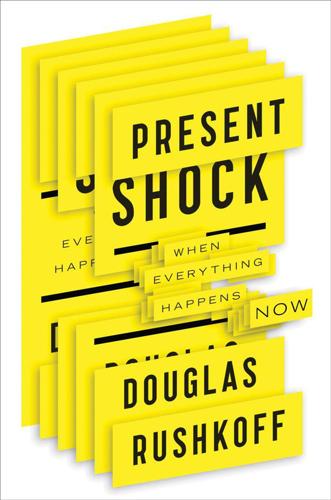
Present Shock: When Everything Happens Now
by
Douglas Rushkoff
Published 21 Mar 2013
“Shooters,” where the player runs around and shoots monsters or other enemies, may seem the most present-tense but actually offer the least amount of player authorship. While the player can kill things on each level in any number of ways, this only brings him to the next predetermined level. “God” games, like SimCity and Civilization, let players build and supervise worlds. The player may be charged with planning a city, managing a civilization from its inception, or even evolving life from the beginning (as in Spore). The biases of these worlds are determined by the choices the player makes. Violent choices yield a violent world; focusing on business may create a world more dominated by economics; and so on.
…
See also MyLifeBits; TheBrain self-confidence, narrative collapse and, 53 self-consciousness, digiphrenia and, 111 self-determination, 66 self-interest/selfishness, 193–94, 221, 223, 248, 250 senses: conflict of, 109–10; digiphrenia and, 109–10, 114–15 September 11, 2001, 3, 10–11, 17–18, 48, 198, 207, 216 serious games, 63 Shaate Zadek Medical Center, 191 share/sharing: fractalnoia and, 203–5, 211, 238–40; overwinding and, 142, 155, 156, 169, 192, 194; sports and, 40. See also cooperation/collaboration Sheen, Charlie, 31, 203, 219 Shirky, Clay, 93, 116 “Shooters” (game), 62 shopping. See consumers short forever. See overwinding SimCity (game), 62 Simmons, Bill, 41 simplification, 220, 247 The Simpsons (TV show), 23, 25–26, 28 simulations, digiphrenia and, 84 singularity, 3, 8, 252, 253, 254, 256, 258, 260, 263 situation comedies, 30 skaters, 132–33 Skype, 70 Slavin, Kevin, 179–80 sleep, polyplastic, 95 smart phones, 83, 84, 99, 211 Smith, Adam, 226 Smith, Zadie, 34 soap operas, 33 social games, 62–63 social interaction: digiphrenia and, 85, 96, 109; overwinding and, 169, 184; television and, 24 social issues, games and, 63–64 social media/networks: fractalnoia and, 199, 204, 209, 211, 214, 215, 216–17; narrative collapse and, 64.
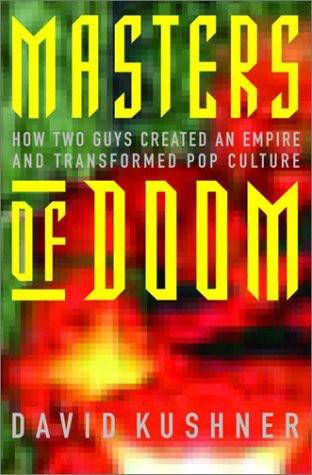
Masters of Doom: How Two Guys Created an Empire and Transformed Pop Culture
by
David Kushner
Published 2 Jan 2003
“We have this opportunity to do something totally new here, something fast and texture-mapped. If we can make the graphics look great and fast, and make the sound cool and loud, and make the game explosively fun, then we’re going to have a winner, especially with the theme.” The computer game industry was still meek, after all. SimCity, a hit game, challenged players to build and micromanage a virtual town. Civilization, another success, was a heady Risk-like strategy game based on famous historical battles–blood not included. Wolfenstein could be like nothing the industry had ever seen. “It will be just shocking,” Romero concluded, “a totally shocking game.”
…
His terms for publishers were brash: $3 million per game with a 40 percent royalty, plus, he wanted to keep all the intellectual property rights as well as rights to port his company’s games to other platforms. Companies balked but didn’t back away. This was the age of vanity game development houses. Sid Meier, legendary designer of Civilization strategy games, had his own company, Firaxis. Will Wright, creator of the best selling SimCity series, had his company, Maxis. Richard Garriott had Origin; a former employee of his named Chris Roberts would spawn off his own, Digital Anvil. After the success of Wolfenstein, Doom, and Quake, Romero was not just famous, he was bankable. Publishers flew him and Tom out first-class, putting them up in thousand-dollar-a-night suites in Beverly Hills and whisking them around in limousines to the best restaurants in town.

Building Microservices
by
Sam Newman
Published 25 Dec 2014
Erik Doernenburg first shared with me the idea that we should think of our role more as town planners than architects for the built environment. The role of the town planner should be familiar to any of you who have played SimCity before. A town planner’s role is to look at a multitude of sources of information, and then attempt to optimize the layout of a city to best suit the needs of the citizens today, taking into account future use. The way he influences how the city evolves, though, is interesting. He does not say, “build this specific building there”; instead, he zones a city. So as in SimCity, you might designate part of your city as an industrial zone, and another part as a residential zone. It is then up to other people to decide what exact buildings get created, but there are restrictions: if you want to build a factory, it will need to be in an industrial zone.

Ajax: The Definitive Guide
by
Anthony T. Holdener
Published 25 Jan 2008
Some examples of turn-based games are Sid Meier’s Civilization (1991) from MicroProse, Heroes of Might and Magic (1995) from MobyGames, and Shattered Union (2005) by 2K Games. Economic genre games include titles such as SimCity (1989) Gaming on the Web | 725 from Maxis, Railroad Tycoon (1990) from MicroProse, and Capitalism (1995) by Interactive Magic. Meanwhile, SimEarth (1990) by Maxis, Black and White (2001) from EA Games, and Dungeon Keeper (1997) from Electronic Arts are a few examples of God-like games. As one of the first turn-based games of its kind, SimCity, shown in Figure 21-4, helped to pave the way for a popular genre that is still strong today. Figure 21-4. SimCity, which helped to start the genre of turn-based games Turn-based strategy games are graphics-intensive in that many things are going on at once.
…
video on YouTube, 661 what they can do, 664 massive multiplayer online role-playing games (MMORPGs), 730 Matsumoto, Yukihiro, 43 McClanahan, Craig, 60 media types (CSS), 800 menus, 154 button and image navigation, 180–188 buttons, 180–184 image rollovers, 185–188 drop-down, 188–191 file menu, 192–212 adding Ajax, 210 JavaScript code for manipulating, 199–209 navigation, 175–212 simple navigation bar, 175–180 messages element (WSDL), 601 <meta> elements, 566 Meta Content Framework (MCF), 14 metadata GIF images, 436 XML attributes, 845 MetaWeblog interface, 620 methods considerations in web application design, 25 DOM table methods, 137 event, 132 informational DOM stylesheet methods, 126 Internet Explorer differences from DOM 2 stylesheet methods, 127 MgmtAPI, 621 Microsoft adCenter, 902 ASP/ASP.NET, 40 browser wars with Netscape, 10 Excel, 47 MapPoint, 627, 903 .NET Framework, 58 built-in documentation capability, 26 .NET Remoting to implement RPC, 596 SQL Server, 45 open source, Express Edition, 46 Virtual Earth, 628 Visual C# Developer Center, 27 Visual Studio, 59 Windows Live Search, 652 (see also IIS; Internet Explorer; Windows systems) MIME types compression based on, 814 RSS and, 16 Miner, Wilson, 61 mixed content elements, 845 MMORPGs (massive multiplayer online role-playing games), 730 MNG (animated version of PNG), 439 MochiKit library, 886–889 Ajax in (Deferred object), 886–889 Async object, 886 model (data access) module, 30 model-view-controller (see MVC design pattern) modular coding, 789–806 client side, 791–803 CSS, 795–802 JavaScript, 802 XHTML, 791–795 defined, 789 possible modularization in an Ajax application, 790 server side, 804–806 server-side components, 806 SQL, 805 using server side for structure, 804 modules basic three-tier web application, 29 DOM specifications, 13 Event, 129 modulus 10 algorithm, 543 moo.fx, 95 MooTools library, 877–880 effects, 880 form submission, 880 making an Ajax request, 879 simple server requests, 877 mouse click event handling added to character class, 749–753 mouse input (games), 766 MouseEvent module, 129 MouseEvents, image rollovers, 185 movement functionality added to character, 743–747 Mozilla browsers Gecko layout engine, 18 JavaScript error properties, 409 MSDN Internet Explorer handling of stylesheets, 129 Windows Live Search, 652 MSHTML (Trident), 18 MSN Messenger, 903 MSN Spaces, 620, 903 MUD (multiuser dungeon/dimension) games, 728 Index | 943 multidimensional databases, 47 multistable perception, 183 music and video services, 631–636 list of some popular services, 632 YouTube, 632–636 MutationEvent module, 130 MVC (model-view-controller) design pattern, 30 incorporated into RIAs, 30 Jakarta Struts framework, 60 Ruby on Rails, 59 MySQL, 46 mysql_real_escape_string( ) function, 535, 557 Mystery House (adventure game), 727 N name attribute <form> element, 490 deprecation for certain elements in XHTML, 494 document.frames[] array of elements, 322 XHTML 1.0, 321 names (XML), 846 namespaces SOAP, 598 XML, 846–848 Atom 1.0 versus RSS 2.0, 16 navigation, 175–246 general application layout and, 246 lack of, 146 lists used for, 291 menus, 175–212 button and image navigation, 180–188 drop-down menus, 188–191 file menu, 192–212 function of, 154 simple navigation bar, 175–180 other navigation aids, 221–243 accordion navigation, 236–239 Ajax and page loading, 240–243 breadcrumbs, 221–226 links at bottom of a page, 226–228 navigation boxes, 231–235 paged, 228–231 problems with Ajax navigation, 243–245 bookmarks, 244 browser back button, 245 944 | Index tabs, 212–221 CSS tabs using XHTML lists, 213–215 image tabs, 216–217 tab content, 218–221 navigation boxes, 231–235 vertical lists, using, 235 navigation windows, 347–355 placing content into, 347–349 information boxes, 348 pop-up windows, 360–362 replacing alerts, prompts, confirms, etc., 349–355 confirmation window, 349–351 larger forms, 353–355 prompt window, 351–353 tool tips, 355–360 Necker cube, 183 Nederlof, Peter, 188 .NET Framework, 41, 58 architecture, 58 assemblies, 59 .NET Remoting, 596 NETaccounts (financial accounting), 626, 904 Netscape browsers browser wars with Microsoft, 10 layout engines, 18 network databases, 48 network stack, 816 news and weather services, 636–641 list of some services, 637 NewsIsFree, 637–641 NewsCloud, 637, 904 NewsGator, 637, 904 NewsIsFree, 637, 637–641, 905 API functions for use with web service, 638 getNews( ) request, results of, 639 using SOAP and PHP to pull data from, 640 nodes appending by specifying a location, 109 appending node to list of child nodes, 108 methods used to create, 107 referencing table nodes, 136 standardized list of node types, 105 nodeType property, 113 <noframes> element, 318 Nonstandard Event module, 130 O O(n log n) sorting algorithms, 268 O(n2) sorting algorithms, 268 O’Reilly, Tim, 661 OASIS (Organization for the Advancement of Structured Information Standards), 596 object databases, 48 object literals, 825 object manipulations (animation), 467–472 object positioning (Rico), 464 obscurity, avoiding in application design, 145 one-stop shops, 149 onFailure property, 277 onreadystatechange property (XMLHttpRequest), 69, 80 onSuccess property, 277 Open Group, 596 open source services, 668 OpenAJAX Alliance, 94 openPageInDIV( ) function (example), 326 openPopUp( ) function, 340 Opera browsers Presto layout engine, 19 user changes, 363 operating systems alert windows, 335 fonts, 163–166 interoperable communication with SOAP, 597 optimization of Ajax applications, 807–839 Ajax optimization, 838 client and server communication, 838 code optimization, 839 data, 839 client-side, 818–830 JavaScript, 822–830 XHTML and CSS, 819–822 execution speed, 809 file size, 808 HTTP, 809–815 compression, 813–815 headers, 810–813 packets, 815–818 optimal sizes, 817 server side, 830–838 compression, 830–833 SQL, 833–838 Optrata mashup, 662 Oracle, 45 open source version, 10g Express Edition, 46 web site, 45 organic layout, 158 Organization for the Advancement of Structured Information Standards (OASIS), 596 organizing tools, 155 overflow: hidden (CSS rule), 442 P packets, 815–818 optimal sizes, 817 requests for JavaScript, CSS, and media files, 818 TIP/IP, 808 page indexing, 569 page layout, 329–334 dynamic nature of pages, 330 separating structure from presentation, 333–334 page loading, status bar for Ajax, 240–243 page reloads, web pages in 2000, 7 paged navigation, 228–231 Ajax solution, 230 solution using DHTML techniques, 228 pagination, table, 283–291 sorting paginated tables, 289–291 using Ajax, 287–289 using JavaScript, 285–287 palettes, 436 panels, 149 parallel lines, 763 ParseKeypress( ) function (example), 765 ParseMouseClicks( ) function (example), 766 parseResponse function, 100 parsers documentation, 27 validating parsers, 27 parseStateToQueryString( ) function, 245 parseXML( ) function, 80 parsing JSON strings, 90 path between two points approximating a straight line, 748 pause time between frame switching, 442 PC Direct Source storefront, 161 PEAR modules, 63 Index | 945 pen colors (whiteboard), 715–718 People Finders, 666 people searches, 667 perception, 3D objects in 2D space, 183 PeriodicalUpdater object, 868 PeriodicUpdater object, 101 persistent stylesheets, 372 Personal Web Server (PWS), 36 PhishTank, 905 phone number reference service, 650 phone numbers, validating, 539 photo services, 641–649 Flickr, 642–649 list of popular APIs, 641 PHP, 39, 41 adding a post programmatically to del.icio.us, 624–626 adding compression to a site, 831 base64_encode( ) function, 312 calling FeedBurner MgmtAPI’s Find Feeds method, 622 chat client structure, 679 checking on parameters, 556 code to create a table for a server response, 277 error and logging constants, 410 error handler, custom, 411 frameworks, 62 full text site search, 568 get_points.php file, sending whiteboard information to clients, 713 handling a JSON request from the client, 88 inline documentation, 27 logError script, 427 modular server-side components used to build page structure, 805 mysql_real_escape_string( ) function, 535 parsing <meta> elements on a site, 566 preparing and sending search hints back to user, 579 put_message.php file (chat application), 687 REST request to AWS, 610 script handling a RAW POST sent as XML, 526 script handling an XML data request, 74 script handling GET or POST from the client, 525 script handling RAW POST as JSON, 526 946 | Index server-side script handling dynamic bar graph request, 477 slide show application, script for Internet Explorer, 315 slide show application, script sending pictures from server, 312–314 SOAP request to AWS, 607 SoapClient( ), 637 using feeds to distrubute information, 615 using to pull data from NewsIsFree, 640 using with JSON, 87 phpDocumentor parser, 27 pictures (see images; photo services) pipe character (|), separating lists, 226 Pixagogo, 642, 905 pixels (font sizing), 386 planning phase, Ajax web application development, 24 platform games, 731 plug-ins for browsers, 733 Flash, 733 Java applets, 734 Shockwave, 734 PNG alpha-transparency, support by browser engines, 18 PNG image format, 437, 439–453 alpha transparency, 439 building animations with JavaScript looping, 442–444 more robust animation object, 444–448 PNG CSS, 441 using Ajax, 448–453 character animation, 735 differences from GIF, 440 pop-up boxes building custom, 336 CSS styling rules for alert window, 338 dragging functionality, adding, 344–347 keeping focus and closing, 339–343 pop-up windows, 360–362 file sharing application, sending a file, 692 list of features, 361 user consent for, 361 (see also navigation windows) port types element (WSDL), 601 Portable Network Graphics (see PNG image format) portlets, 668 ports element (WSDL), 601 position of an object, animating dynamically, 464–467 POST method (see GET and POST methods) postfix incrementing operators, 830 PostgreSQL, 46 preferred stylesheets, 372 font size, 389 presentation layer, separation from structure or data layer, 250 Presto, 19 standards supported, 18 print files (CSS), units of measurement, 371 processing instructions (PIs) in XML, 849 product codes (UPC Database), 653, 909 professional licenses, 667 Programmable Web, 668, 892 programming languages compiled, optimization of, 807 language for the backend, optimization and, 808 object databases, 48 selecting for mashup backend, 670 Progressive JPEG, support by browser engines, 18 project managers, prerequisites for this book, xiv prompt window, 351–353 properties CSS2 and JavaScript equivalents, 119–124 Event object, 132–133 informational DOM stylesheet properties, 126 informational properties (DOM), 114 innerHTML, 138–140 Internet Explorer alternatives to DOM 2 stylesheet, 127 JavaScript errors, 409 nodeType, 113 traversal properties (DOM), 116 protocol stack, web services, 597 Prototype Framework, 95, 863–869 $F( ) function, 496 accordion object, 238 Ajax response callbacks, 864 Ajax with Prototype, 863 automating requests, 868 dynamic page updating, 867 Element object, show( ) and hide( ) methods, 242 evaluating JSON, 866 event handling, 577 Event object, pointerX( ) and PointerY( ) methods, 704 events and event handling, 342 global responders, 867 helper functions, 98 objects used with Ajax, 99–102 passing parameters to HTTP method, 865 use by Rico library as base, 460 use in file menu example, 198 pseudoselectors, Internet Explorer and, 223 Public Record Finder, 666 public records, 666 differences in availability from states, 666 puzzle games, 730 PWS (Personal Web Server), 36 Pythagorean theorem, 759 Python, 39, 42 frameworks, 61 Q query string, passing page number in, 228, 230 Quest for Glory game series, 727 quick sorts, 268 quote_smart( ) function, 687 R Rademacher, Paul, 660 radio buttons custom, 499 properties, 499 form controls, 493 setting error indicator to, 553 Rails (see Ruby on Rails) RangeError object, 409 RAW POST method, 525 PHP script handling as XML, 526 script handling as JSON, 526 RDF Site Summary (RSS 0.9 and 1.0), 16 reading style for web content, 147 readyState property (xmlDoc), 80 readyState property (XMLHttpRequest), 69 using in status bar, 242 real estate company, mashup for, 671 RealEDA Reverse Phone Lookup, 650, 905 Really Simple Syndication (RSS 2.0), 16 (see also RSS) Index | 947 real-time communication (see communication needs for business) real-time strategy games, 724 receptivity to user feedback, 142 rectangular collision detection, 754–759 reference services, 650 ReferenceError object, 409 regular expressions, 538 checking for valid email addreses, 540 Dojo validation objects, 551 phone number checks, 539 Rehabilitation Act, Section 508, 33 relational databases, 48–54 creating tables, 48–51 deleting records from a table, 53 getting records from the database, 52 implementation of dimensional databases, 47 inserting records into tables, 51 performance improvement with stored procedures, 54 updating records, 53 relative font sizes, 386 release (software development), 23 reloading web pages, classic web sites, 7 Remote Procedure Call (RPC), 595 removeChild( ) method, 110 removeEventListener( ) method, 131 repositioning objects and storing the positions, 403–407 dragging objects, 403 storing information in a database, 404 Representational State Transfer (see REST) Request Entity Too Large error, 421 requirements analysis, 23 Ajax web application development, 24 residential information in the U.S. and Puerto Rico, 651 Resig, John, 96 resolution testing, 26 Responders object, 867 <response> elements code attribute, 612 response headers (HTTP), 810 response to search query, 590 responseText property (XMLHttpRequest), 69 responseXML property (XMLHTTPRequest), 76 948 | Index responseXML property (XMLHttpRequest), 69, 78 REST (Representational State Transfer), 604 eBay API, 653 requesting search results, 654 example request to Flickr web service, 648 Flickr request and response, 642 request to AWS, 609 triangle of nouns, verbs, and content types, 605 RESTful design, 605 Result objects (Google AJAX Search API), 587 CSS classes for each object, 592 Results objects (Google AJAX Search API) CSS styling structures, listed, 592 reusability (web applications), 142 Rhapsody, 632, 906 RIAs (Rich Internet Applications), 30 Rich Site Summary (RSS 0.91 and 1.0), 16 Rico, 97 Rico library animating an element on the page, 466 dragging and dropping capabilities, 460 object positioning through Effect object, 464 reference, 875 role-playing games (RPGs), 728–730 massive multiplayer online RPGs (MMORPGs), 730 root element or root node, 104 rows collection, 136 RPC (Remote Procedure Call), 595 RSS, 614 differences between Atom 1.0 and RSS 2.0, 16 feed results of getNews( ) request on NewsIsFree, 639 feed used to create REST web service, 615 feed validation, 616 GeoRSS feed, 630 standards and versions, 15 support by browser engines, 18 version 2.0, 15 Ruby, 39, 43 Ruby on Rails (RoR or Rails), 59 rule of thirds, 163 rules collection (Internet Explorer), 128 S Safari browsers, WebCore layout engine, 18 sans-serif fonts, 162 Sarissa library, 97, 884–885 Ajax requests, 884 parsing data from the server, 885 web site, 83 XML, 885 XSLT transformation with, 84–86 scraping data for web feeds, 613 screen descriptor (GIF), 435 screen files (CSS), units of measurement, 371 screen.css file, 369 <script> elements needed to use Rico, 466 script.aculo.us, 95, 869–875 auto-completion, 869–872 components, 802 Draggable object, 344–345, 403 dragging and dropping functionality, 455–457 Effect object, 238 effects, 467, 875 online demonstration, 468 inline editing, 873–875 organic site layout, 159 sortable list, integrating Ajax, 303 sorting lists via drag-and-drop solution, 298 scripting languages, 39 server scripting errors, 410 used for ASP, 40 search engines, 154, 565 problems with sites using Ajax, 921 use of databases, 570 using on a local site, 570–575 searches, 565–593 dynamic searching with Ajax, 577–581 giving hints to the user, 577–580 submitting a search from hints, 580 Googling a site, 581–593 search services, 651 types of site searches, 565–576 advanced searching, 576 full text parsing, 568 keyword searches, 566 page indexing, 569 using public search engines on local sites, 570–575 web application search tools, 151 Section 508 of the Rehabilitation Act, 33 security, risks associated with use of Ajax, 919–921 SeeqPod (music service), 632, 906 <select> elements, placement of labels, 485 SELECT statements (SQL), 52 selectNodes( ) method, 83 selectSingleNode( ) method, 83 serialize( ) method, 86 serif fonts, 162 server responses, 531–533 example of client handling complex response, 532 reporting success or failure, 531 Server Side Include (SSI), 38 server side of Ajax applications, 804–806 breaking into components and modularizing, 806 modularizing SQL, 805 optimizations, 830–838 compression, 830–833 SQL, 833–838 using for structure, 804 server-side errors, 410–413 database, 412 external errors, 413 notifying the user, 419 server scripting errors, 410–412 server-side scripting, 28, 39–44 ASP/ASP.NET, 40 handling dynamic bar graph request (fa_stats.php), 477 Java, 43 logging errors, 427 PHP, 41 Python, 42 Ruby, 43 to web services, 607–610 Service Description level (web services), 597 Service Discovery level (web services), 597 Service Messaging level (web services), 597 Service Transport level (web services), 597 Service-Oriented Architecture (SOA), 596 services element (WSDL), 601 servlets (Java), 38, 44 setAttributeNode( ) method, 107 setDragTarget( ) method, 458 setSiteRestriction( ) method (GwebSearch), 586 shapes, drawing for whiteboard, 719 Index | 949 Shea, Dave, 332 shell sorts, 268 Ship, Howard M. Lewis, 61 Shockwave, 734 shopping carts, 155 shopping services, 652–655 eBay, 653–655 .shtml file extension, 38 SimCity, 725 simple path movement, 747 simple to use applications, 142 Simpy (bookmarking service), 623, 906 slang dictionary, 650, 910 Slashdot, paneled design pattern, 149 slide show application, 304–315 Ajax-enabled, in action, 314 CSS styling rules, 305–307 JavaScript code, 307–311 server-side PHP script to send images, 312–314 working slide show using Ajax, 311 slideBy( ) method, 465 slider bar for font sizes, 389–392 slideTo( ) method, 465 sliding an element around on the page, 464 Smarty, 63 SmugMug, 641, 907 Snipshot, 642, 907 SOA (Service-Oriented Architecture), 596 SOAP, 597 request to AWS using PHP, 607 request to NewsIsFree, 637 using to pull data from NewsIsFree, 640 Social Security numbers, validating, 540 software development life cycle, 22–24 simplification for web applications, 24 Sortable object, 298 create( ) method, options to pass in object parameter, 298 onUpdate callback, 303 sorting lists, 297–302 tables, 264–279 JavaScript versus Ajax sorting, 279 JavaScript, using, 264–275 keeping style with sorts, 280–283 paginated tables, 289–291 using Ajax, 275–279 sorting algorithms, 268–269 950 | Index Sowden, Paul, 372 spacing, text, 166 spellcheckers, 157 spider performing a full text search, 569 spreadsheets, 157 Spring framework, 60 SQL (Structured Query Language) CREATE TABLE statement, 49 DELETE statement, 53 INSERT statement, 51 Microsoft SQL Server, 45 modularizing in server-side coding, 805 optimization, 809, 833–838 inline queries, 834–837 stored procedures, 837 origin of, 45 retrieving and storing information for draggable object, 404 SELECT statements, 52 stored procedures, 54 UPDATE statements, 53 SQL injection attack, 535 function dealing with quotes, 687 square collision detection, 754 SRC Demographics, 650, 907 SSI (Server Side Include), 38 ASP (Active Server Pages), 40 stamps for whiteboard application, 719 standards organizations, 10 standards, compliance with, 19 (see also web standards) static directions (character movement), 742 status bar, showing Ajax actions, 242 Status object, 242 status property (XMLHttpRequest), 69 statusText property (XMLHttpRequest), 69 Stenhouse, Mike, 244 storage engines (MySQL), 46 stored procedures, 54, 805, 837 storing information, 155 desktop application tools, 157 straight line between two points, 748 strategy games, 724–726 abstract, 724 real-time, 724 turn-based, economic, and God-like, 725 stress testing, 26 StrikeIron Historical Stock Quotes, 626, 907 StrikeIron Residential Lookup, 651, 908 StrikeIron U.S.

The Long History of the Future: Why Tomorrow's Technology Still Isn't Here
by
Nicole Kobie
Published 3 Jul 2024
It is a smart city: it makes use of the various technologies for city management, has a smart city plan for future innovations, and most importantly, is a place where people want to be. Why would anyone try to build another Palo Alto when KL is right there? I can tell you which I’d rather spend a holiday in, and where I’d rather work. We need more cities. And we need them to be sustainable and smart. But we need to stop playing SimCity and constructing cities top-down from fantasist master plans designed by famous architects who haven’t built anything meaningful in years, and also stop building in technology that either doesn’t yet exist or will be out of date by the time groundworks are completed. Are we stopping with these shenanigans?
…
But corporate funding means research and development is going to require a profit margin and business case, or to catch the imagination of someone very rich. If you have money, like the billionaires whose names are peppered throughout this book, you can build what you like. If Elon Musk wants driverless software developed for his Teslas, all he has to do is pay for it. If Larry Page wants to play SimCity with real people and buildings, he can set up a company to have a go at it. And if Alfred Beach wants to build an air-blown train in a tunnel, well, he can (and did). Of course, reality still bites, even for billionaires: if driverless cars aren’t technically possible, no amount of dollars will make them so; if a government or citizens don’t want a bubble-domed city, Page’s vision will stay on the page; and delayed by regulators and macroeconomics, Beach ran out of money and time to expand his pneumatic railway.
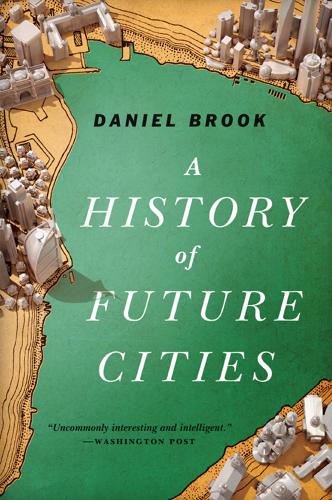
A History of Future Cities
by
Daniel Brook
Published 18 Feb 2013
The report put Dubai on global investors’ maps alongside the better-known capital of the Celtic Tiger and the Mojave Desert outpost that was then the fastest-growing city in the world’s largest economy. All three cities experienced massive booms, but Dubai’s was the most explosive. If early St. Petersburg was a Renaissance perspective drawing brought to life on a marshy tabula rasa, Dubai was a real-life SimCity, a fantastical metropolis that looked as if it had magically leapt from an architect’s laptop running the latest computer-assisted design software out onto the pristine desert. Housing developments sprouted up along the beachfront, and office towers rose along the city’s massive freeway spine, Sheikh Zayed Road, in the most outlandish shapes: an enormous golf tee, a silvery sandworm, even a proposed spherical “Dubai Death Star.”
…
In addition to making Dubai the financial hub of the Middle East, Sheikh Mohammed sought to make it the technology and media capital—pursuing glamorous industries whose viability in an autocracy seemed dubious. In 1999, saltwater-inundated lowlands along Sheikh Zayed Road were drained and set aside to become two contiguous free zones, Internet City and Media City. Today, the fifty-three-story twin Chrysler Buildings standing next to each other along the expressway mark the development. The SimCity Chryslers are a fitting icon for the Internet and Media City free zones, since the zones themselves mimic America on a deeper level, hoping to approximate the constitutionally protected free inquiry that has helped make the United States a global leader in media and technology. To entice companies to locate in Internet City and Media City, Dubai’s authorities exempted the contiguous free zones from the UAE’s strict Internet censorship policy.

Consumed: How Markets Corrupt Children, Infantilize Adults, and Swallow Citizens Whole
by
Benjamin R. Barber
Published 1 Jan 2007
In fact, the games turn out to be fairly rudimentary and generic, with traditional gaming spaceships and robots named to accommodate Islamic Jihadist terminology; a few, however, engage in more virulent forms of play, permitting players to shoot virtual Israeli soldiers, for example (e.g., Special Force and Under Siege).25 Then there is the long-lived and much-played series based on the classic SimCity game that allows gamesters to engage in simulated urban and civilization design of a quite creative and altogether pacific nature. Such games are known as “open-ended” because they are aimed less at achieving some winning end than at maximizing ingenuity and imagination along the way. The original SimCity authored by designer Will Wright grew out of a map-making simulation. It gave birth to The Sims, a game in which players simulate a family carving out its own destiny according to loose program rules.
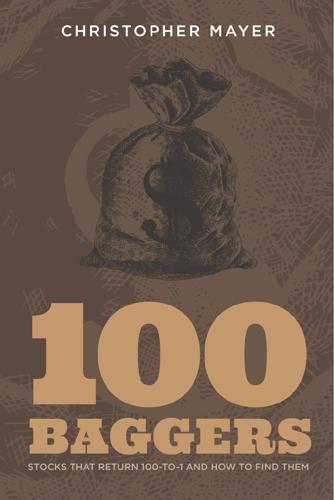
100 Baggers: Stocks That Return 100-To-1 and How to Find Them
by
Christopher W Mayer
Published 21 May 2018
“This has in turn led them to have exclusive rights to the development of games for several professional leagues along with that of their players. Madden NFL, NBA Live, FIFA, NHL and PGA Tour series have all been produced under the EA sports label since the late 80s and early 90’s. FIFA, its most successful sports franchise, broke its 100 million unit sale in 2010.” EA had other hit franchises too: SimCity, Battlefield and the Need for Speed series. “To have so many hit franchises under one roof is exactly why this company has consistently grown since its inception,” Alejandro concludes. EA is intriguing on many levels. It was in what seems a fickle industry but managed to create a culture that produced winning games.
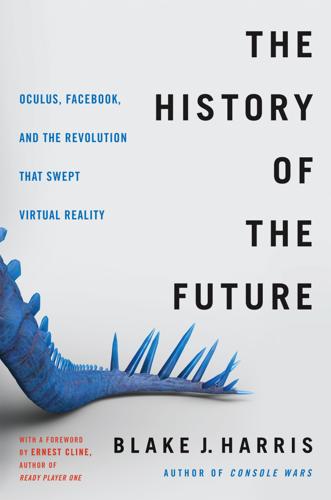
The History of the Future: Oculus, Facebook, and the Revolution That Swept Virtual Reality
by
Blake J. Harris
Published 19 Feb 2019
Iribe didn’t launch into a full-fledged pitch right then and there, but over the next few months it became clear that not only was Iribe serious about starting a company with Antonov, but he also already knew what their start-up should do. “Do you know the company Maxis?” Iribe asked. Of course Antonov knew Maxis. They made SimCity and a bunch of other cool Sim-related games. And they had just been acquired by Electronic Arts for $125 million. They were a big deal! Did Iribe think they should do a company that made simulation games? Did he think that one day their company might actually make them rich? Rich enough to one day have a million dollars . . . each?
…
It wasn’t a game studio like Maxis, but rather an idea that had come to Iribe while listening to a Maxis engineer talk at the 1998 Computer Game Developers Conference.1 That engineer was talking about an in-house tool he had created at Maxis—a graphics-based windowing system that was used to build games like SimCity—and as Iribe listened to this engineer talk, he started thinking about how great it would be if such a tool existed for all game developers. “That’s what we should build,” Iribe explained to Antonov. “A windowing system to compete against Windows and Mac. Initially, we’ll make it for developers, but eventually it’ll be for everything and everyone.”

What If We Get It Right?: Visions of Climate Futures
by
Ayana Elizabeth Johnson
Published 17 Sep 2024
Nuclear is 24 by 7 power that runs 100% of the time, where solar is more like 25% and wind may operate 50% of the time. And so you need to optimize the transmission grid, optimize battery storage, optimize all these things. When you put all of these things into a SimCity model—now I’m dating myself from video games… Ayana: I loved SimCity. Bring it on. Jigar: Well, you put together all these different pieces and you’re like, “Oh, what if I move this, and what if I put this in?” et cetera. The lowest-cost, highest-resiliency and -reliability structure results in three or four scenarios. And in all of those scenarios, you need new nuclear.
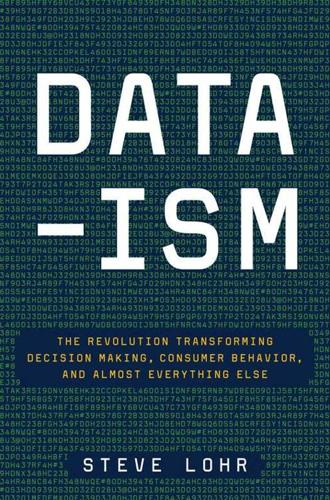
Data-Ism: The Revolution Transforming Decision Making, Consumer Behavior, and Almost Everything Else
by
Steve Lohr
Published 10 Mar 2015
On-time delivery for the drugs increased to 99 percent from less than 90 percent. The software model gave McKesson the clarity and the confidence to go ahead and is now being used to experiment and improve performance across the company’s distribution network Moreover, IBM is adapting the software it developed for the giant pharmaceutical distributor—a kind of SimCity for supply chains—to other industries. And while it may be exceptional in some respects, McKesson’s success illustrates where the big-data approach shines today. It shows data really being used to guide decisions and to make better decisions, ones that trump best guesses and gut feel, experience and intuition.
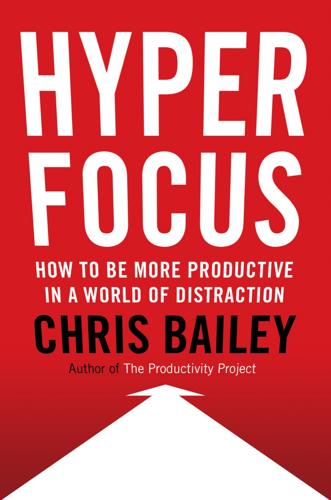
Hyperfocus: How to Be More Productive in a World of Distraction
by
Chris Bailey
Published 31 Jul 2018
The man has almost single-handedly crafted the soundtrack to countless childhoods, and his videos easily attract millions of YouTube views. However, while you may recognize his music, you likely won’t know Jerry Martin’s name. Jerry composed the music scores for video games such as The Sims and SimCity—games that have collectively sold well over 100 million copies worldwide. He’s also created soundtracks for Apple, General Motors, and NBA commercials. Jerry’s music is the perfect place to start when looking at how music influences productivity, as he has created some of the most productive soundtracks in existence.
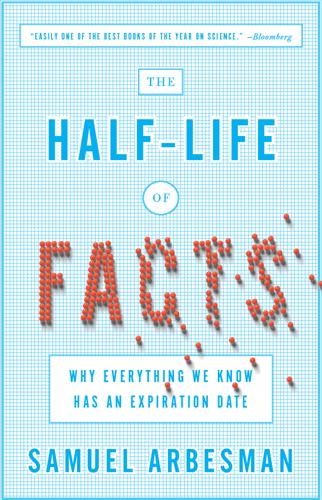
The Half-Life of Facts: Why Everything We Know Has an Expiration Date
by
Samuel Arbesman
Published 31 Aug 2012
Even then, its usage didn’t enter the popular consciousness until decades later. Gumbel’s confusion, and our amusement at this situation, is a testament to the rapid change that the Internet has wrought. But, of course, these changes aren’t limited to the Internet. When I think of a 386 processor I think of playing SimCity 2000 on my friend’s desktop computer, software and hardware that have both long since been superseded. In digital storage media, I have personally used 5-inch floppy disks, 3-inch diskettes, zip discs, rewritable CDs, flash drives, burnable DVDs, even the Commodore Datasette, and in 2012 I save many of my documents to the storage that’s available anytime I have access to the Internet: the cloud.

A Burglar's Guide to the City
by
Geoff Manaugh
Published 17 Mar 2015
I was reminded of a strange book called Local Code by architect Michael Sorkin. Local Code was Sorkin’s attempt to design a whole city from scratch—with one big twist. The whole thing had been written as if it were the byzantine, nearly impossible to follow codes and regulations for an entire, hypothetical metropolis. The effect is like stumbling upon the source code for SimCity. Sorkin’s exhaustively made point was that, if you know everything about a given metropolis, from its plumbing standards to its parking requirements, its sewer capacity to the borders of its school districts, then you could more or less accurately imagine the future form of that city from the ground up.
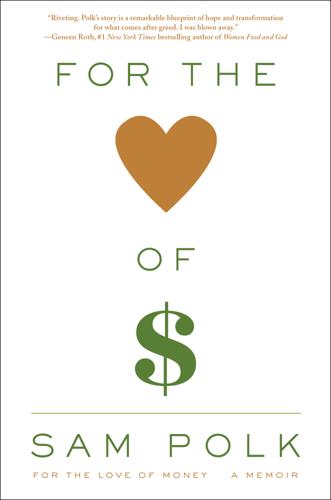
For the Love of Money: A Memoir
by
Sam Polk
Published 18 Jul 2016
She hung out with a tough crew, got in fights, and started wearing her hair in cornrows. After Sloane graduated in May, we flew down to Charlotte together to look at apartments. From the moment she stepped off the plane, I could tell she felt out of place. She loved fashion and culture, an LA-and-New York kind of girl. Charlotte was SimCity with fried pickles. We stayed in a motel that looked much better on the Internet than in person. One night, we were startled awake at 3:00 a.m. by a man pounding on our door, shouting. It was just a drunk who’d forgotten his room number, but when I saw Sloane’s face, I knew she wasn’t moving to Charlotte.
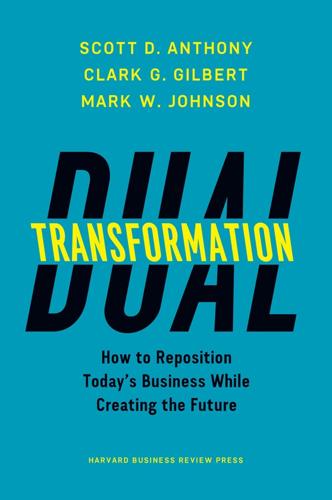
Dual Transformation: How to Reposition Today's Business While Creating the Future
by
Scott D. Anthony
and
Mark W. Johnson
Published 27 Mar 2017
The third realm is “full digital immersion,” using “open-scale technology to remove structures around the size of the class.” The first project in this realm is a global freshman academy with about two hundred thousand students. Finally, the fourth realm is “education through exploration” that blurs the line between game playing and education. “You’ve played games like SimCity, SimAnt, and Spore, right?” Crow says. “Imagine playing a game that by the end of it you have mastered college chemistry, college biology, and college physics.” ASU has also used technology to target nontraditional students that would never consider touching foot on its traditional campus. For example, in 2014 it announced a deal with Starbucks that allowed Starbucks baristas to receive degrees through the program for free.
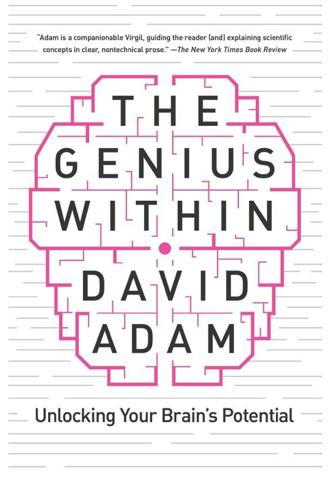
The Genius Within: Unlocking Your Brain's Potential
by
David Adam
Published 6 Feb 2018
One was Lewis Carroll, author of Alice’s Adventures in Wonderland, which itself contains many maths references and in-jokes. Another is John Conway, perhaps best known for inventing what is known as Conway’s ‘Game of Life’ – a simple simulation of evolution and development called a cellular automaton, which spawned several generations of life simulation games, such as ‘SimCity’ and the rest. In theory, most people could learn to use these anchor points and calculations to identify days from dates, at least for a span of a few decades. It takes time to work out the answer this way though – much longer than savants. It also demands plenty of conscious attention, and so it helps to have lots of conventional intelligence.
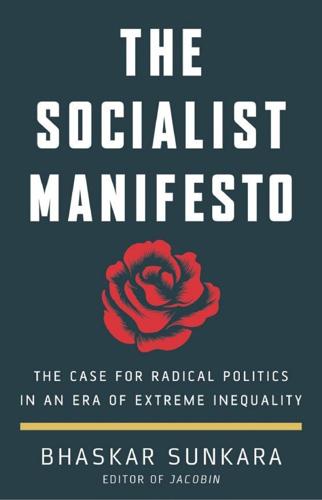
The Socialist Manifesto: The Case for Radical Politics in an Era of Extreme Inequality
by
Bhaskar Sunkara
Published 1 Feb 2019
Outside of theory, there’s no such thing as a “free market”—capitalism requires both planning and a regulated market. But the question about what role each would play under socialism is an open one. You spend long nights eating Hawaiian pizza and discussing it with Fred. As a doctor who sees how well the government-run health care system works, and as an avid SimCity 2000 fan, Fred proposes that markets can be done away with and replaced with central planning. In this system, regional or national planners decide what the economy should produce and then ask firms to turn out a certain amount of goods. They might have discretion in how they do so, but they have to hit their quotas.

Supertall: How the World's Tallest Buildings Are Reshaping Our Cities and Our Lives
by
Stefan Al
Published 11 Apr 2022
As cities are getting more circular, more sophisticated systems will need to manage and share resources. In 2014, Singapore launched a digital twin, a virtual version of the city called “E3A,” “Everyone, Everything, Everywhere, All the Time.” It displays 3D renderings of all the city’s parks, buildings, and waterways, like the video game SimCity, based on real-time data such as energy use, pollution, and noise. The computer model can run virtual experiments and test policies before they are actually implemented. For instance, it can explore the impact of a new building or park on the shadows and wind flows. Systems like this may soon be able to calculate and evaluate the many opportunities for buildings to generate resources.
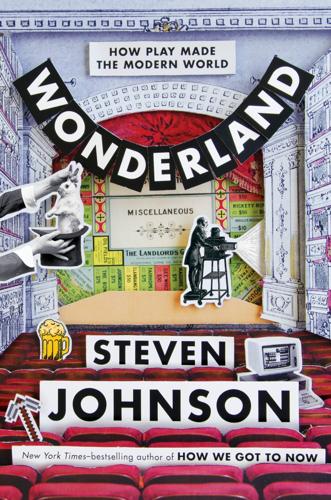
Wonderland: How Play Made the Modern World
by
Steven Johnson
Published 15 Nov 2016
began a lineage that would ultimately evolve into the modern video game industry, which generates more than $100 billion in sales annually. This is impressive enough, but perhaps not so surprising. Video games had to start somewhere, after all. But the legacy of Spacewar! extends far beyond PlayStation and Donkey Kong and SimCity. Just as Expensive Planetarium inaugurated a profound shift in the relationship between on-screen data and the real world, Spacewar! itself planted the seeds for a number of crucial developments in computing. The idea that a software application might be codeveloped by dozens of different programmers at different institutions spread around the world—each contributing new features or bug fixes and optimized graphics routines—was unheard-of when the Hingham Institute first began dreaming of space torpedoes.
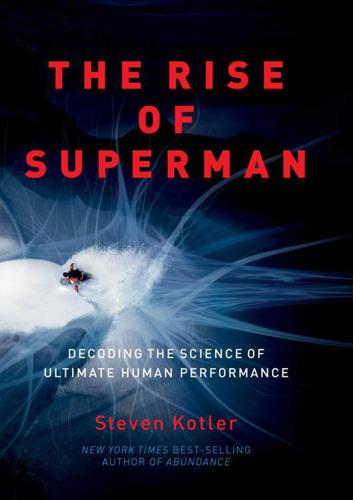
The Rise of Superman: Decoding the Science of Ultimate Human Performance
by
Steven Kotler
Published 4 Mar 2014
University of Virginia psychologist Angeline Lillard: Angeline Lillard and Nicole Else-Quest, “The Early Years: Evaluating Montessori Education,” Science, September 29, 2006, 313(5795), pp. 1893–94. When professor Jeffrey Dyer…and Hal Gregersen: The innovators Dyer and Gregersen are referring to include everyone from high-tech pioneers like Amazon founder Jeff Bezos, SimCity creator Will Wright, Wikipedia founder Jimmy Wales, and Google cofounders Sergey Brin and Larry Page to culture-shaping creatives like rapper/entrepreneur Sean Combs, chef/entrepreneur Julia Child, and Nobel laureate author Gabriel García Márquez. In 2004, when Barbara Walters interviewed Page and Brin, she asked if the fact that their parents were both college professors was the major reason for their success.

Experience on Demand: What Virtual Reality Is, How It Works, and What It Can Do
by
Jeremy Bailenson
Published 30 Jan 2018
“It’s a Gameboy,” the young man replied, and he proceeded to show Skip the famously addictive Russian puzzle game, Tetris. Skip watched for 10 minutes as the normally easily distractible frontal lobe patient sat glued to the game. “I thought, if only I could develop cognitive therapy that could engage folks like this.” Immediately, he began incorporating games like SimCity into his clinical practice. Not long after this experience Skip heard an interview on the radio with Jaron Lanier. Lanier was touting the work of his company, VPL Research, and the transformative possibilities of virtual reality. Immediately Skip saw the therapeutic potential of virtual environments for treating people with cognitive impairments and anxiety disorders: “I thought, what if we could immerse people in functionally relevant environments and do rehab in those contexts?
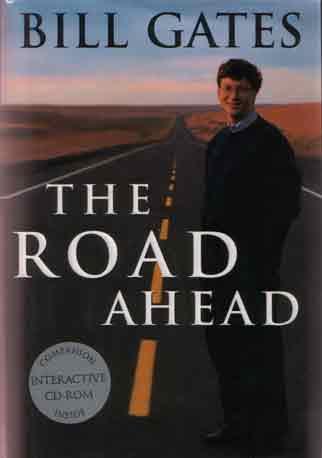
The Road Ahead
by
Bill Gates
,
Nathan Myhrvold
and
Peter Rinearson
Published 15 Nov 1995
SimLife, a popular software program, simulates evolution, so kids get to experience the process instead of just getting facts about it. You don't have to be a child to enjoy this program, which lets you design plants and animals and then watch how they interact and evolve in an ecosystem that you also design. Maxis Software, the publisher of SimLife also produces another program, SimCity, which lets you design a city with all of its interrelated systems, such as roads and public transportation. As a player, you get to be the mayor or city planner of a virtual community and to challenge yourself to meet your own goals for the community, rather than goals artificially imposed by the software's design.
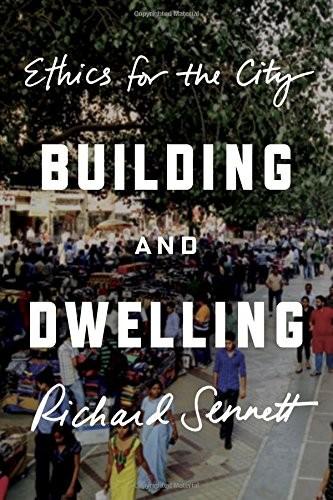
Building and Dwelling: Ethics for the City
by
Richard Sennett
Published 9 Apr 2018
The budgeting cité has focused on the large ville. It would seem that here, far away from Berlin, Max Weber – had he lived long enough – would have found a kind of city-state in which the citizens control their own fortunes.34 As in budgeting, so too the actual design of the smart city can follow an open, coordinative form. The computer game SimCity was an early version which aimed at generating urban villes through interactive high tech. The ForCity project in Lyons, France, uses sophisticated 3-D models to show what an urban future would look like, drawing on big data sets to construct detailed images of urban future fabric. Though they require expert inputting, ForCity models can translate fairly directly commands such as, ‘Show possible three sidewidths for a street of X population, with Y footfall density and Z sessile density.’

Reality Is Broken: Why Games Make Us Better and How They Can Change the World
by
Jane McGonigal
Published 20 Jan 2011
It’s a twist on the traditional massively multiplayer online concept—and, on first impression, it sounds like an impossible paradox. How can you have a “massively” single-player experience when by definition a single-player experience occurs alone? The inventor of the term is Will Wright, the famed creator of SimCity and The Sims games. He coined it to describe his 2008 game Spore, a simulation of the universe that invites players to design a galaxy from scratch, starting with a single-cell creature and evolving it up into a land-dwelling species, then into tribes, complex civilizations, and ultimately a space-faring, planet-designing megacivilization.

Cities Under Siege: The New Military Urbanism
by
Stephen Graham
Published 30 Oct 2009
As yet, through, domestic drones remain unarmed. 110 Kaplan, ‘Hunting the Taliban in Las Vegas’. 111 Nick Turse, ‘Bringing the War Home: The New Military-Industrial-Entertainment Complex at War and Play’, Tom Dispatch, 17 October 2003. 112 Ibid. 113 Stahl, ‘Have You Played the War on Terror?’, 112. 114 Center for Land Use Interpretation, ‘Exhibition Review: Emergency State: First Responders and Emergency Training Architecture’, 2004, available at www.clui.org. 115 Richard Florida, The Rise of the Creative Class, New York: Basic Books, 2003. 116 ‘SimCity will be huge’, Suffolk News Herald, 10 May 2005. 117 Ibid. 118 Walter Benjamin, ‘The Work of Art in the Age of Mechanical Reproduction’, in Hannah Arendt Illuminations, ed., trans. Harry Zohn, New York: Schocken, 1968, 241. Thanks to Marcus Power for this reference. 119 Jean Baudrillard, The Gulf War Did Not Take Place, Bloomington, IN: Indiana University Press, 1991. 120 Jean Baudrillard, Simulacra and Simulation, Ann Arbor, MI: University of Michigan Press, 1994. 121 Abhinava Kumar, ‘America’s Army Game and the Production of War’, YCISS working paper 27, March 2004, 8. 122 James Der Derian, conference brief for Dis/Simulations of War and Peace Symposium, 6–7 June, 2004. 123 Kumar, ‘America’s Army Game and the Production of War’, 8. 124 Roger Stahl, ‘Have You Played the War on Terror?’

If Mayors Ruled the World: Dysfunctional Nations, Rising Cities
by
Benjamin R. Barber
Published 5 Nov 2013
Remote health exams via the web can offer improvements in urban (and rural) health care, especially for those without regular access to doctors. And electronic record keeping is a money-saving boon to public health that improves patient care and helps cities deal with new global pandemics. Even video games, going all the way back to SimCity (which was issued in a new version in 2013) and Second Life, allow experimentation with modes of urban design and cosmopolitan living. Second Life, like most web-based innovation, may be exploited mainly for entertainment (virtual sex and shopping and partying), but it also includes rules for living, principles of design, and a virtual currency with some real-world value.
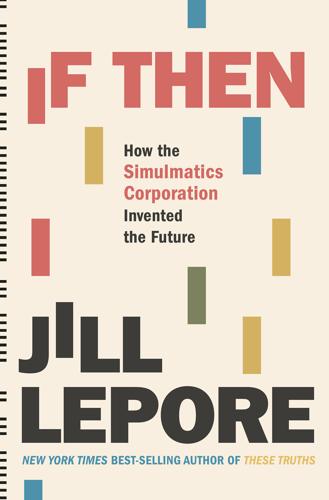
If Then: How Simulmatics Corporation Invented the Future
by
Jill Lepore
Published 14 Sep 2020
In what one historian has called “the twilight of simulation,” universities stopped dedicating funding to systems analysis and simulation, journals stopped publishing, labs closed. MIT shut down its Urban Systems Lab, once headed by Ithiel de Sola Pool, in 1974. For a while it seemed that simulation would live on only in the form of computer games; the first version of SimCity appeared in 1989.3 The people who’d worked for Simulmatics scattered. Peter Shulman, the onetime deputy director of Simulmatics’ Urban Studies Division, went to Vietnam with RAND in 1967, but when he came back to the States the next year, he left New York City for the countryside and became a dairy farmer.
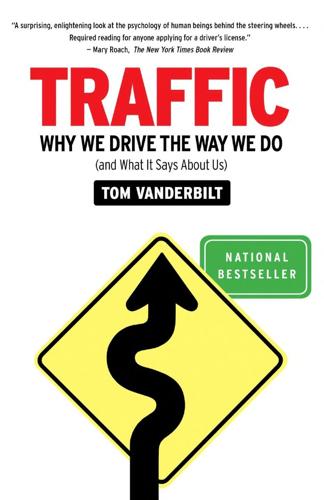
Traffic: Why We Drive the Way We Do (And What It Says About Us)
by
Tom Vanderbilt
Published 28 Jul 2008
“It’s calculating a demand,” says Patel. “But it needs to think ahead and say, ‘How much time do I need for the next signal?’” Over time, ATSAC amasses a profile of how a certain intersection behaves during a given time on a given day. Patel points to a computer screen, which seems to be running a crude version of the game SimCity, with computer renderings of traffic lights and streets but no people. An alert is flashing at one intersection. “This loop at three-thirty on a Sunday has a certain historical value, for a year’s period of time,” Patel explains. “Today it’s abnormal, because it’s not usually that heavy. So it’ll flag that as out of the norm and post it up there as a possible incident.”
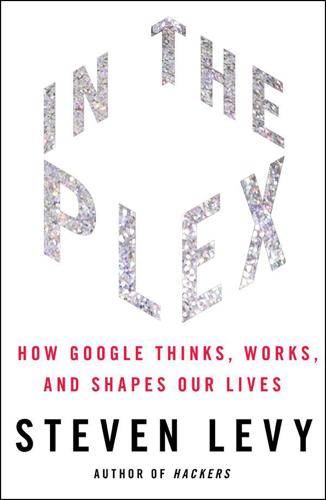
In the Plex: How Google Thinks, Works, and Shapes Our Lives
by
Steven Levy
Published 12 Apr 2011
But there was no way that Google would stop Street View altogether, as some critics demanded. The project was a key component in the company’s bigger information picture. What’s more, Microsoft had its own mirror world, its own fleet of camera-equipped cars cruising the streets, its own low-flying air force to capture three-quarters views of buildings for a SimCity-style picture of the real world. But Google, the market leader, got the attention—and the traffic. But when something went wrong, the reaction was explosive. In early 2010, Google made a horrifying discovery: the cars driving around the streets of the world taking pictures for Street View had “unintentionally” sucked up confidential information—known as “payload data”—from wireless Internet transmitters in the areas they cruised.
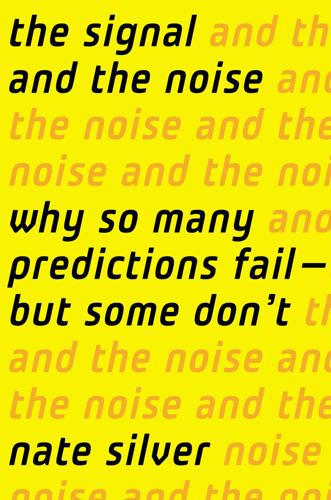
The Signal and the Noise: Why So Many Predictions Fail-But Some Don't
by
Nate Silver
Published 31 Aug 2012
He explained how FRED is organized: “They have schools and workplaces and hospitals all placed according to the right geographical distribution. They have a quite complicated setup where they assign children to schools; they don’t all go to the closest school—and some of schools are small and some of them are real large. And so you get this synthetic sort of a SimCity population.” Dr. Grefenstette and his amiable colleague Dr. Shawn Brown showed me the results of some of FRED’s simulations, with waves of disease colorfully rippling zip code by zip code through SimPittsburgh or SimWashington or SimPhiladelphia. But FRED is also very serious business. These models take few shortcuts: literally everybody in a city, county, or state might be represented.

Future Crimes: Everything Is Connected, Everyone Is Vulnerable and What We Can Do About It
by
Marc Goodman
Published 24 Feb 2015
Gamification of securing software might help technology companies avoid the obvious pitfalls of the “Just ship it” mentality by getting tens of thousands of players around the world to go on “bug hunts” for flaws in their software or hardware products, flaws that would otherwise be exploited by Crime, Inc. hackers to the public’s detriment. Such an idea is already under development by DARPA, as well as by several start-ups, including Topcoder and Bugcrowd. These same techniques could be applied to our nation’s critical infrastructure systems as well. Players could be shown anonymized data in a SimCity-style animated game and let loose to find security vulnerabilities in everything from our virtual electrical grids to our transportation networks. In the end, individual gamers may hold the potential to make significant breakthroughs in cyber security, doing it for no other reason than that they enjoy playing the game.
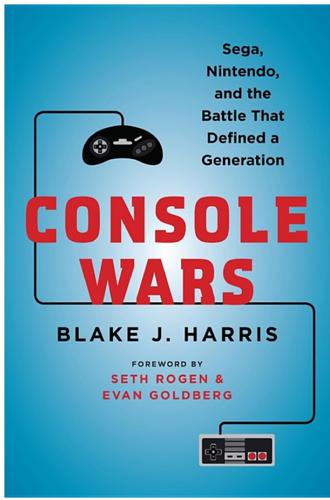
Console Wars: Sega, Nintendo, and the Battle That Defined a Generation
by
Blake J. Harris
Published 12 May 2014
He welcomed the audience, invited them to check out Nintendo’s booth after the speech, and then spoke at length about the Super NES, which would hit stores on August 23, 1991. All systems would come with the groundbreaking new Super Mario World game, while four others would immediately be available for purchase: F-Zero, Pilotwings, Gradius III, and SimCity. Their library would quickly grow, with eighteen games available by Christmas. Lincoln confirmed that, as with the Super Famicom, there would be no backward compatibility and the 16-bit Super NES couldn’t play 8-bit NES games. Sensing a degree of dissatisfaction, he quickly assured everyone that Nintendo was still very much committed to supporting the 8-bit system.